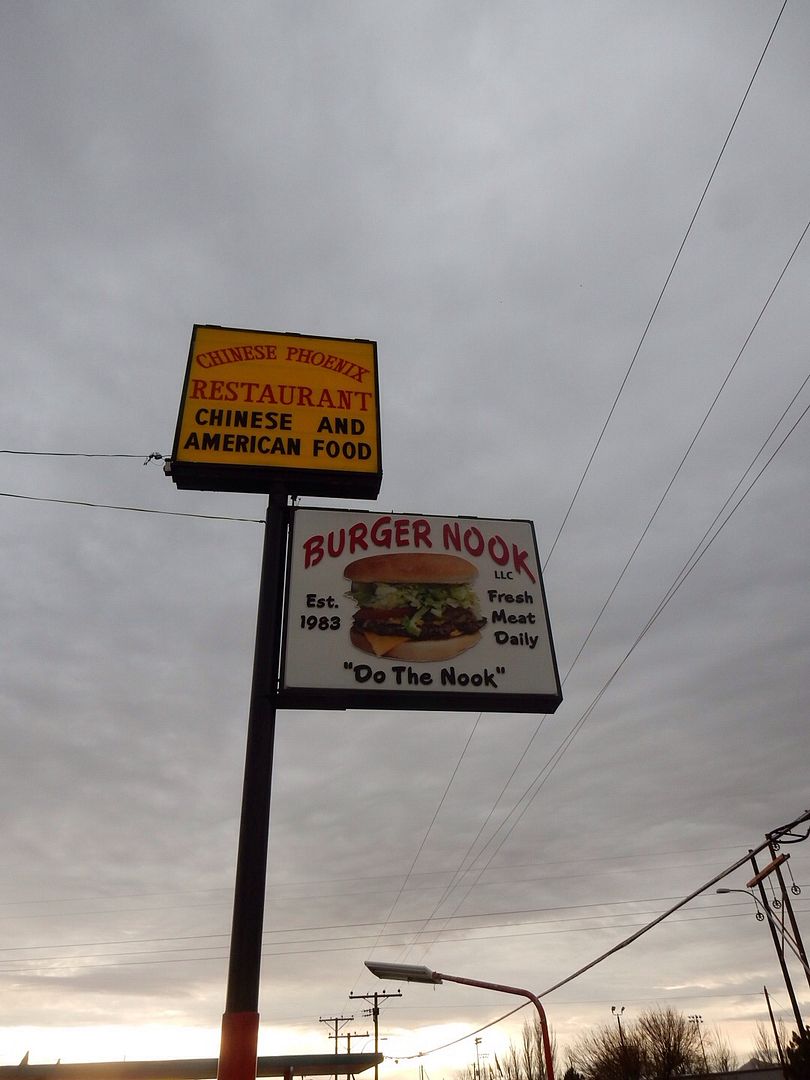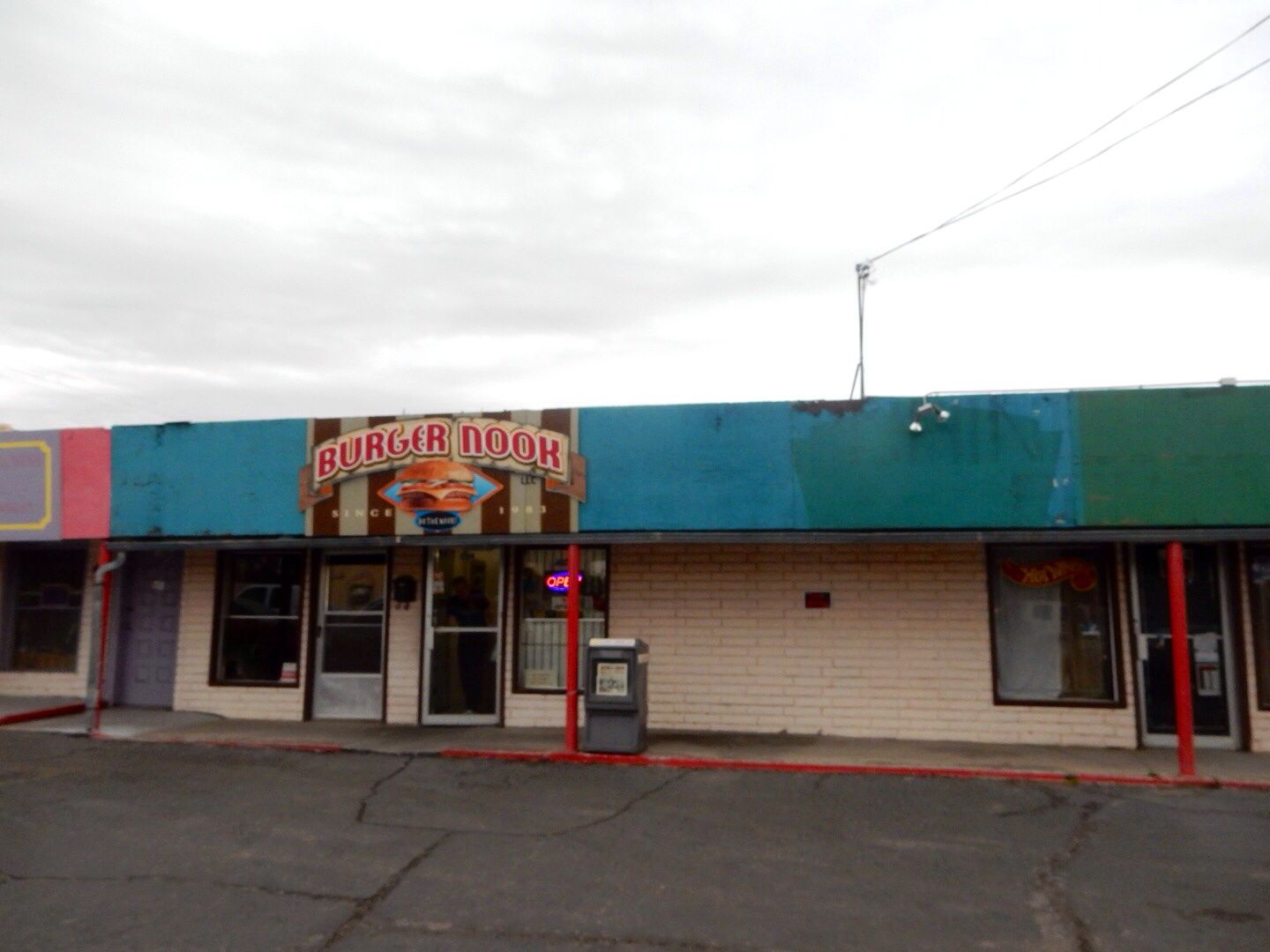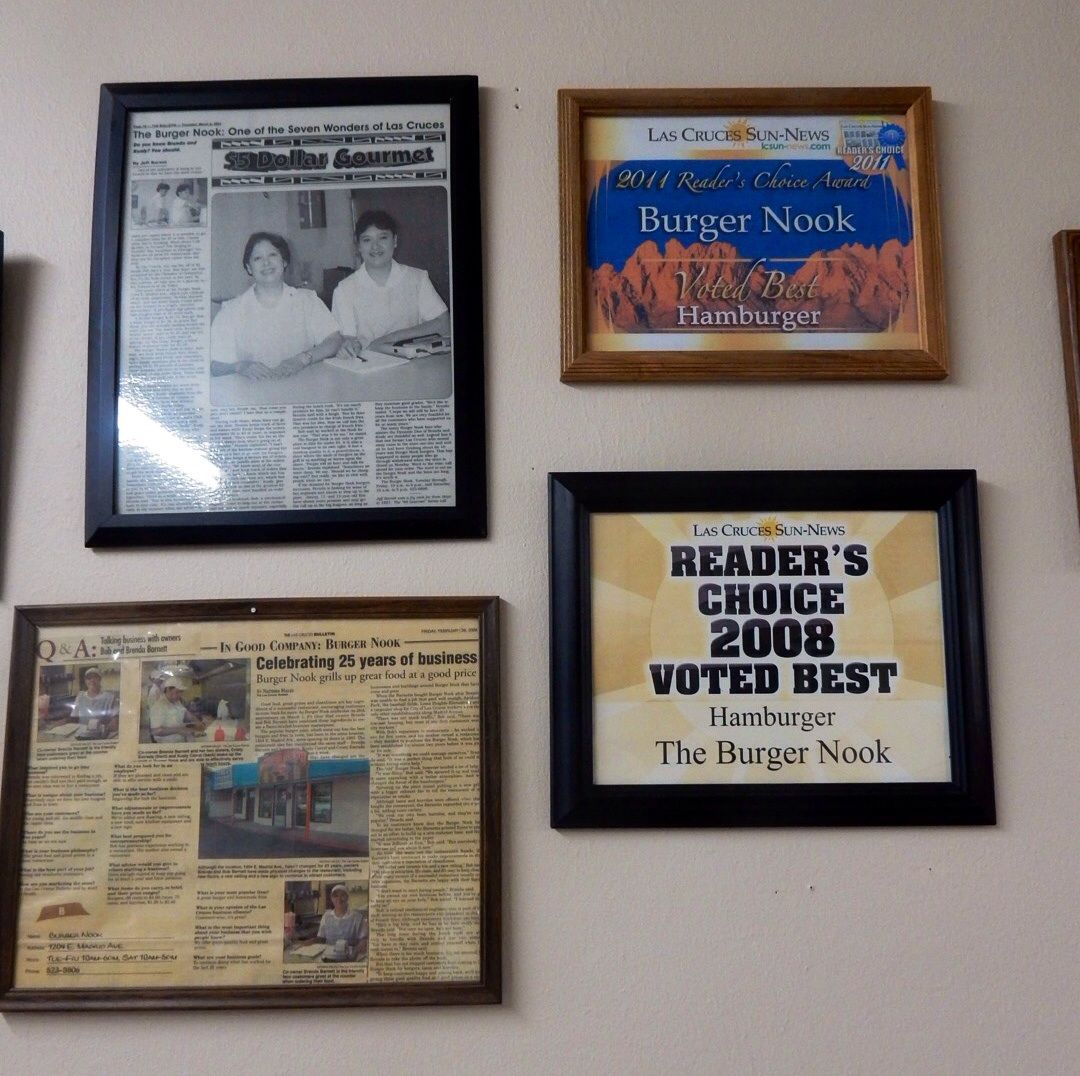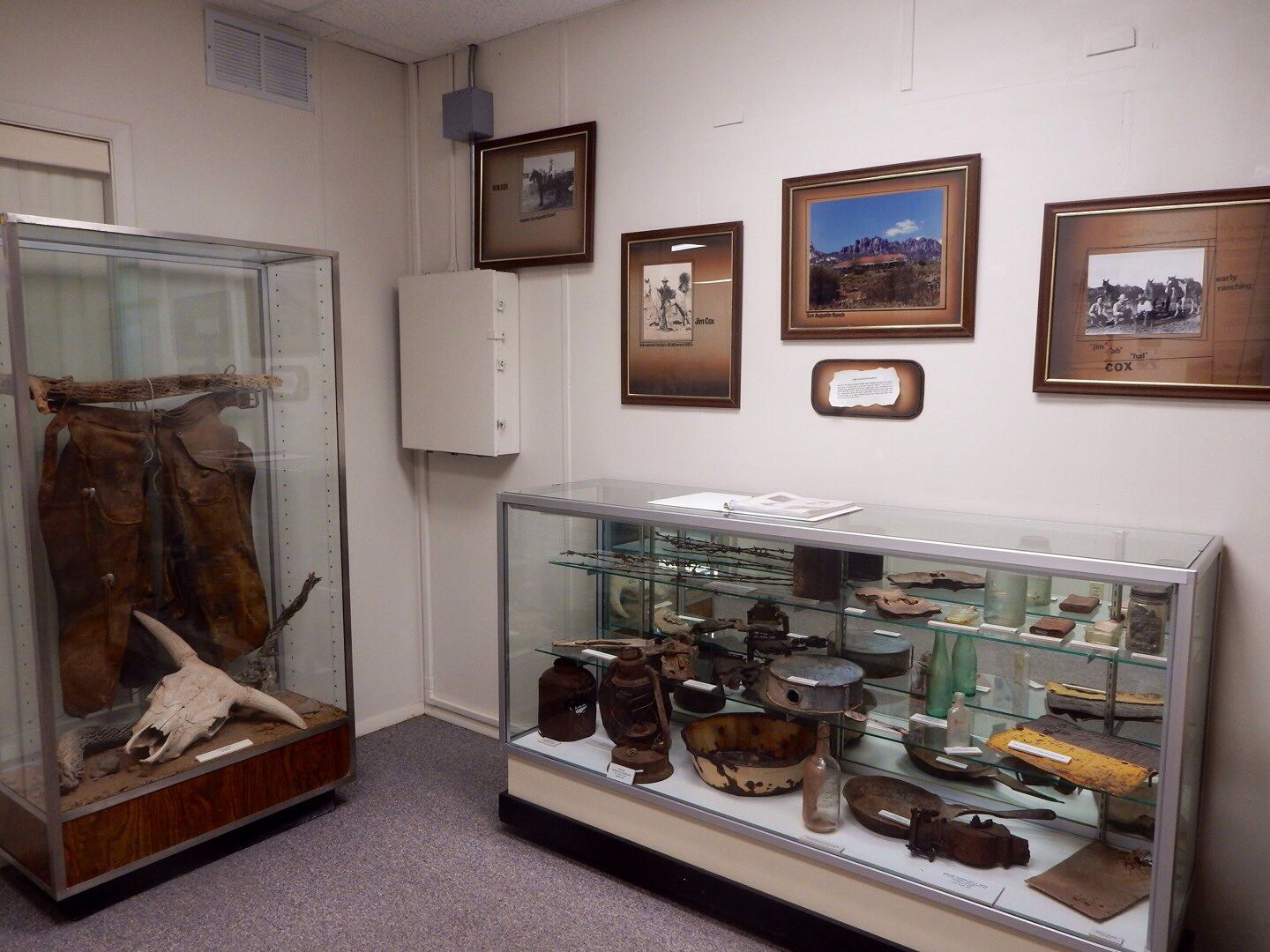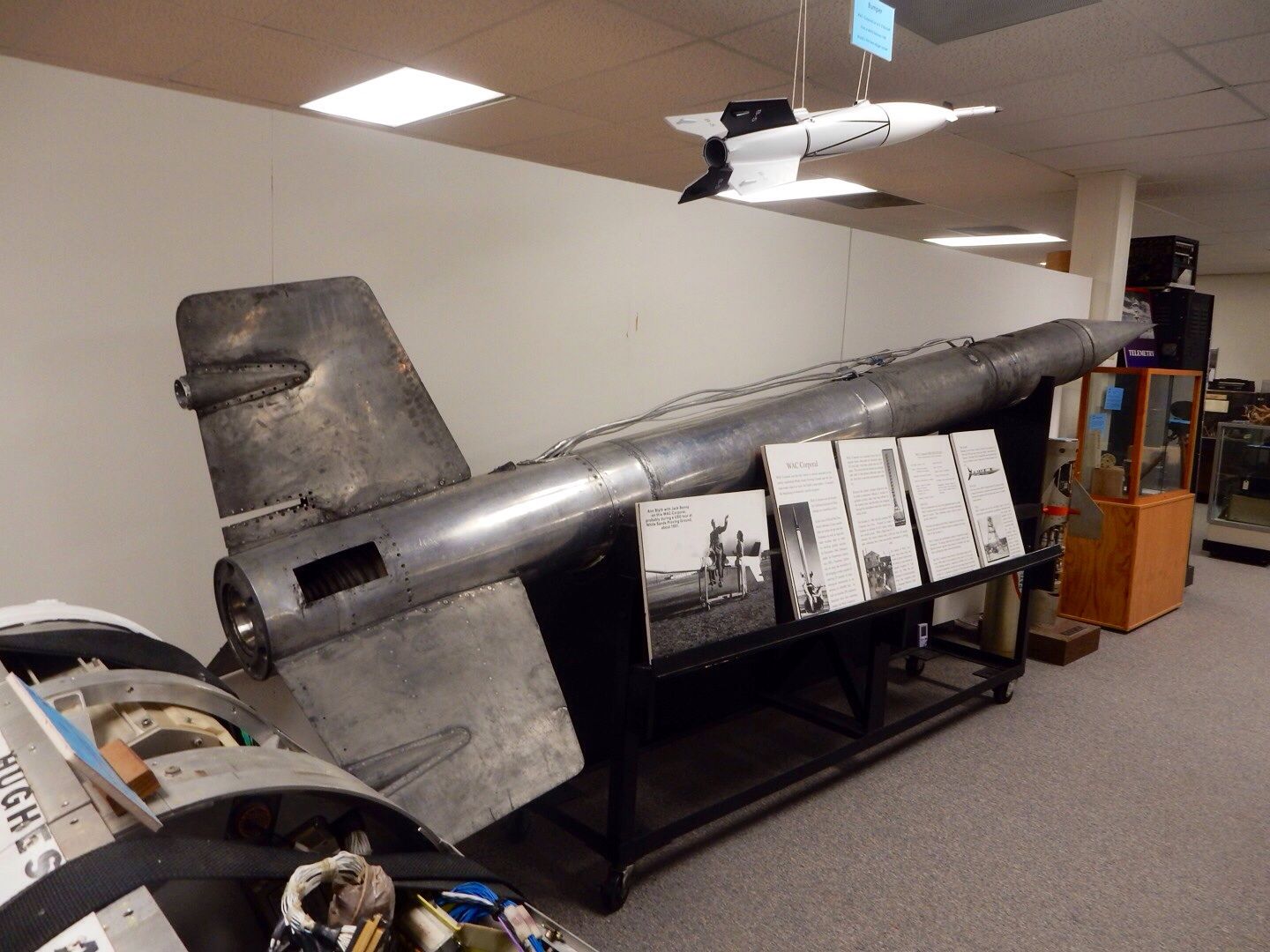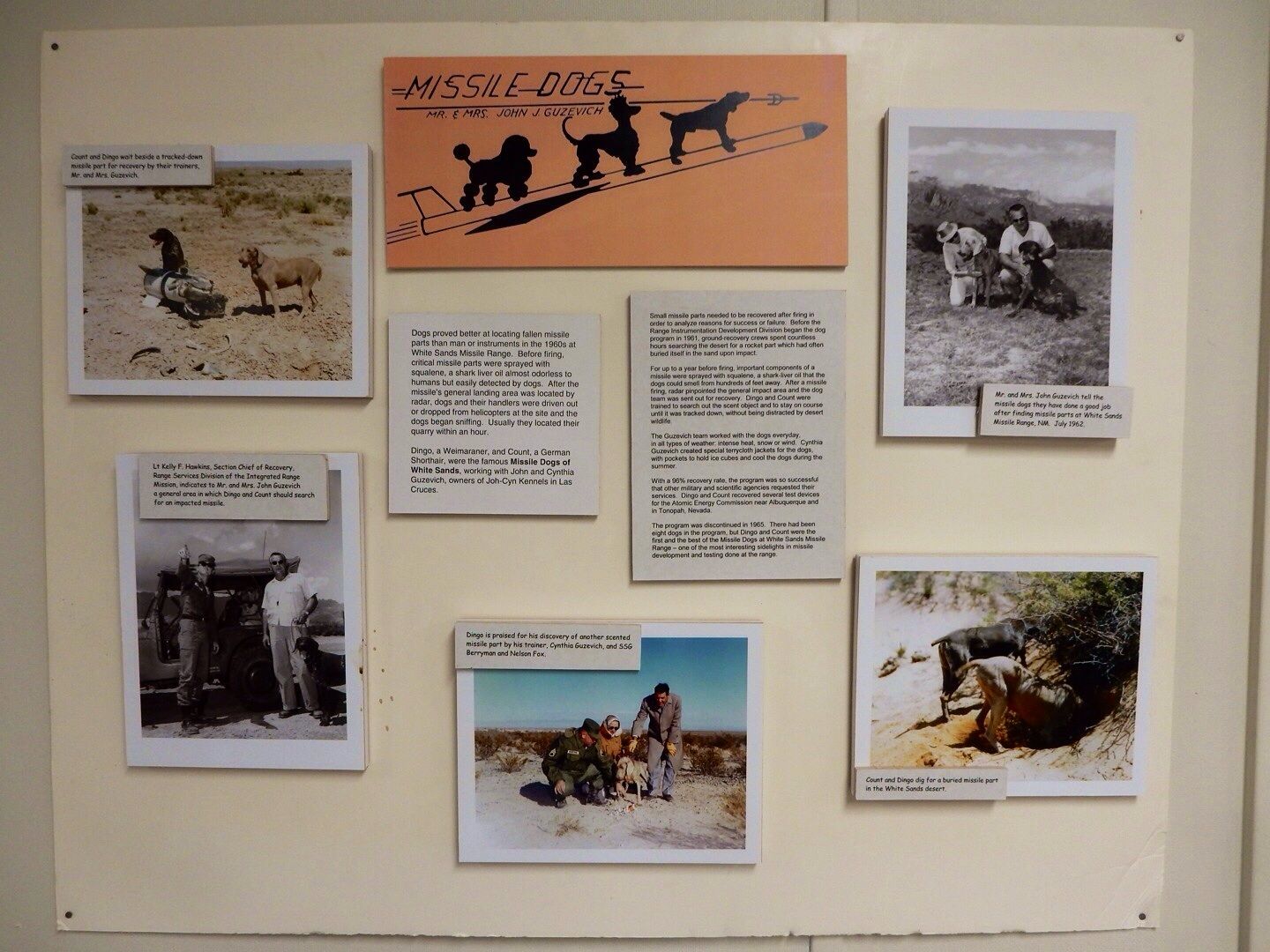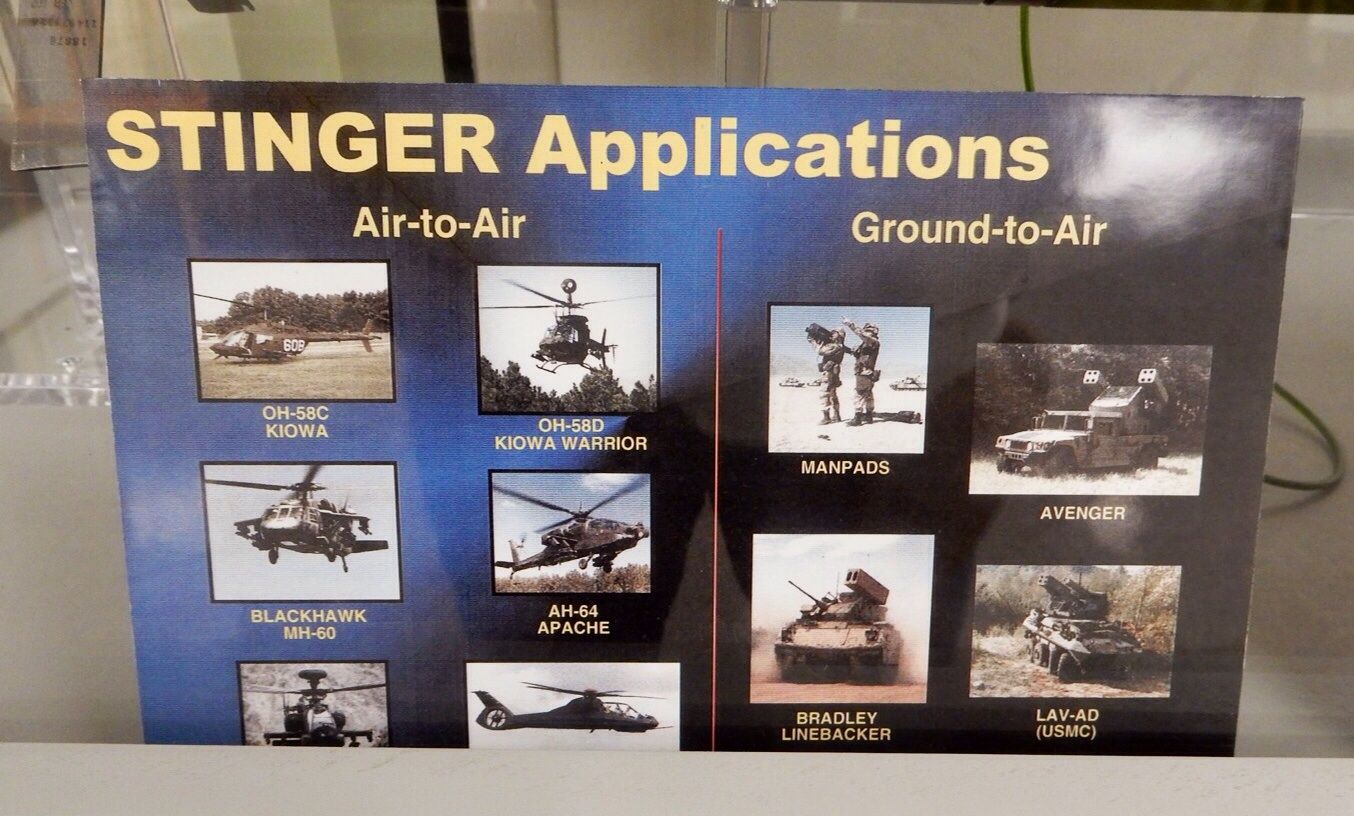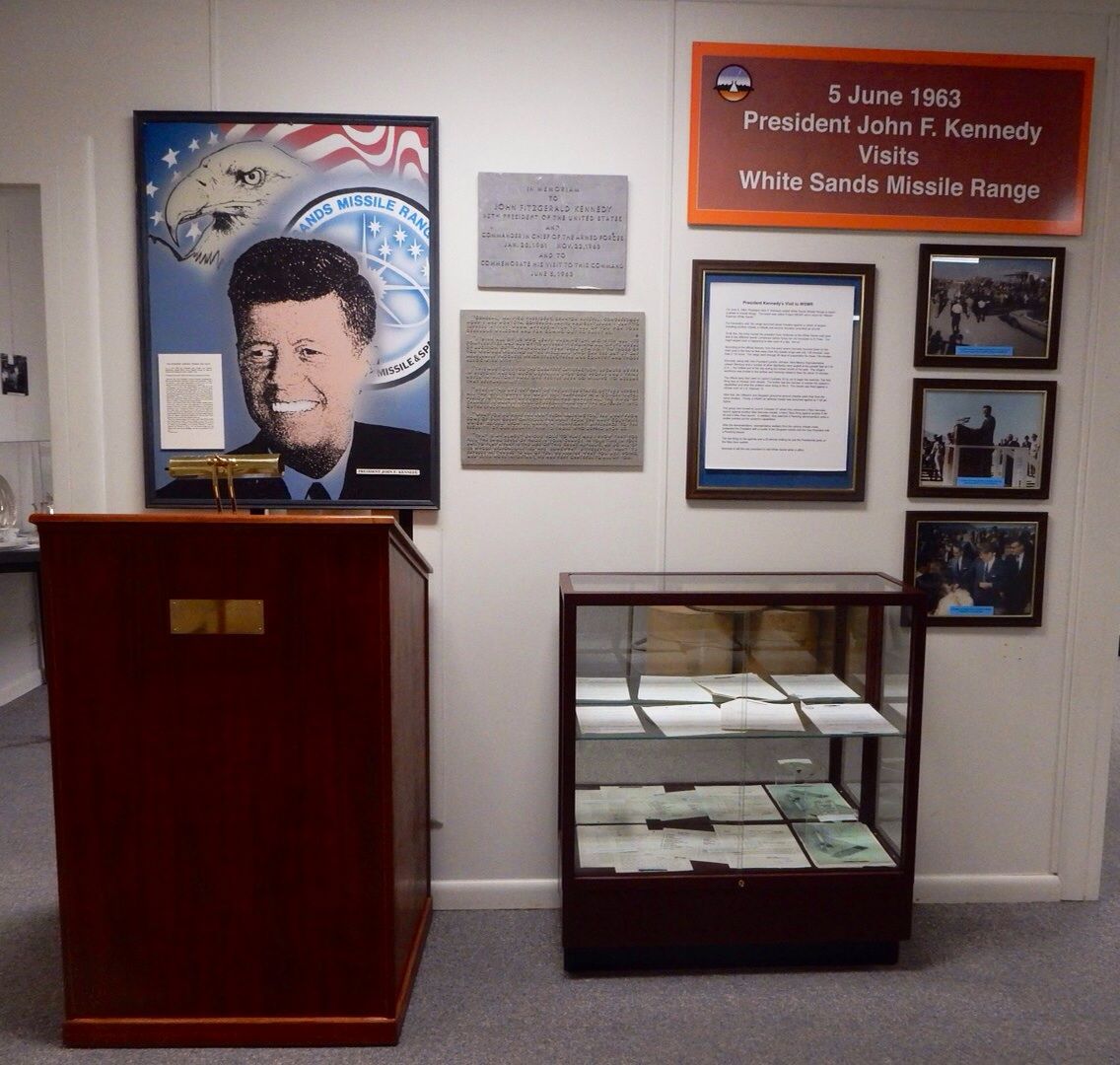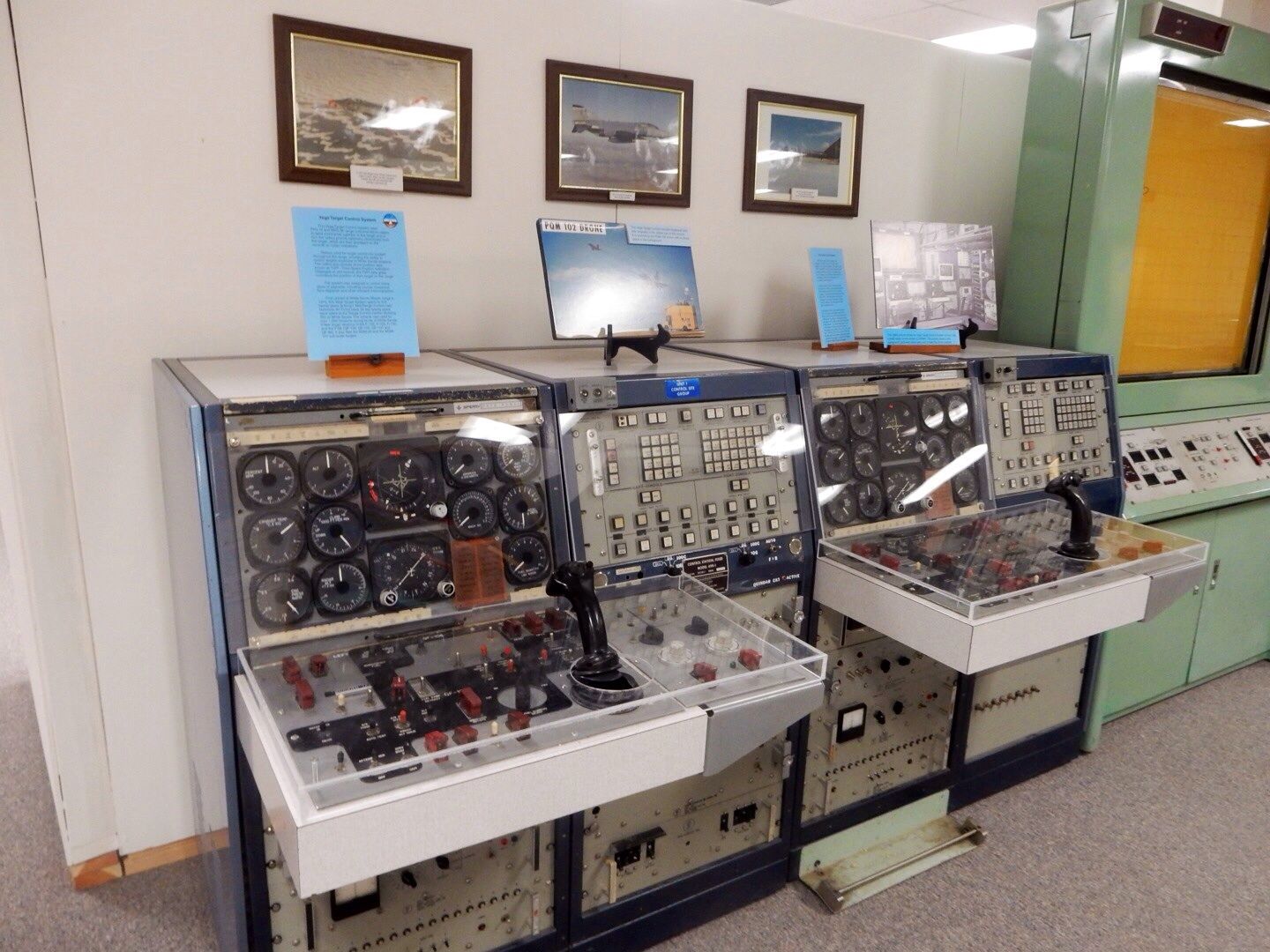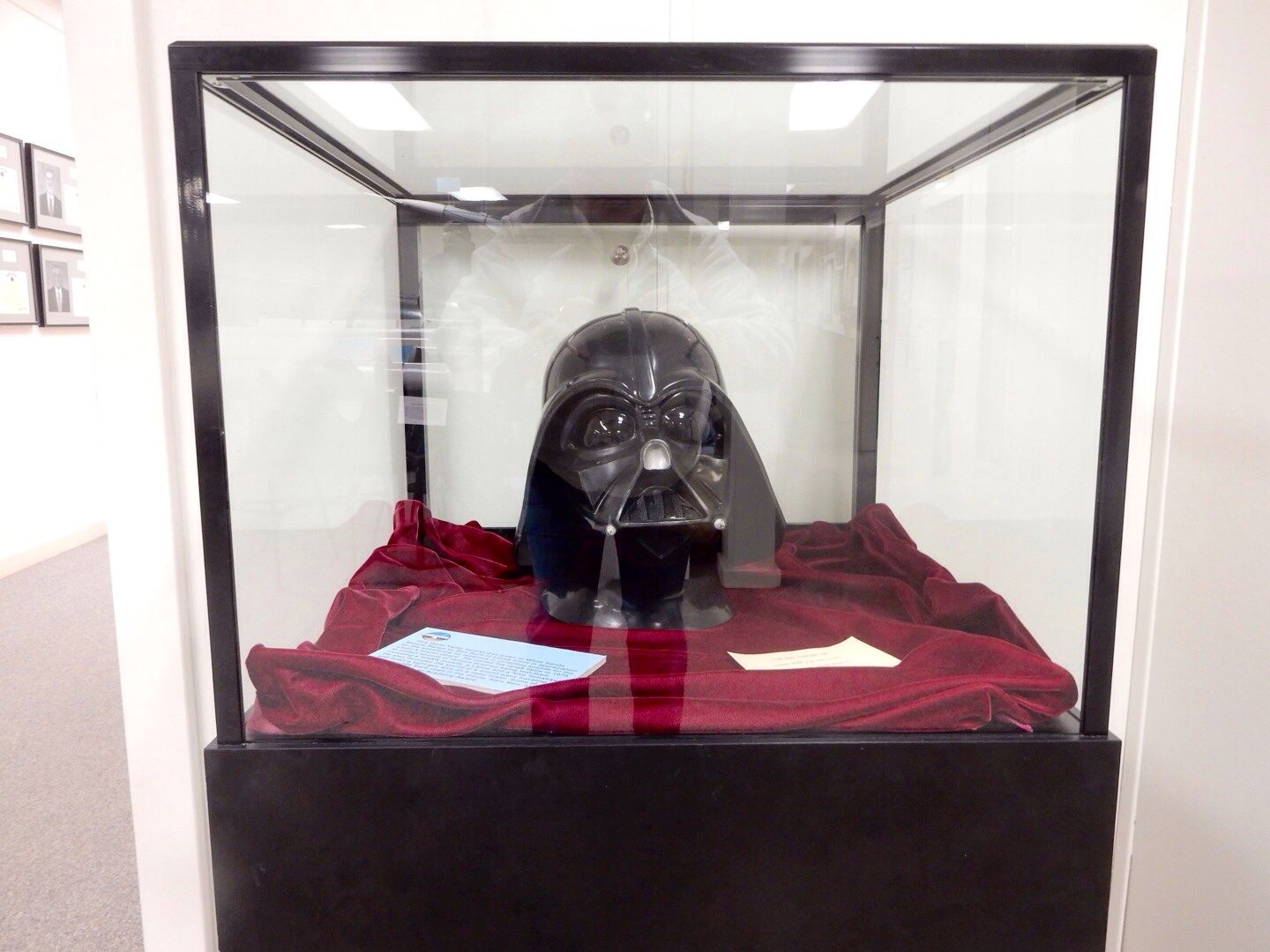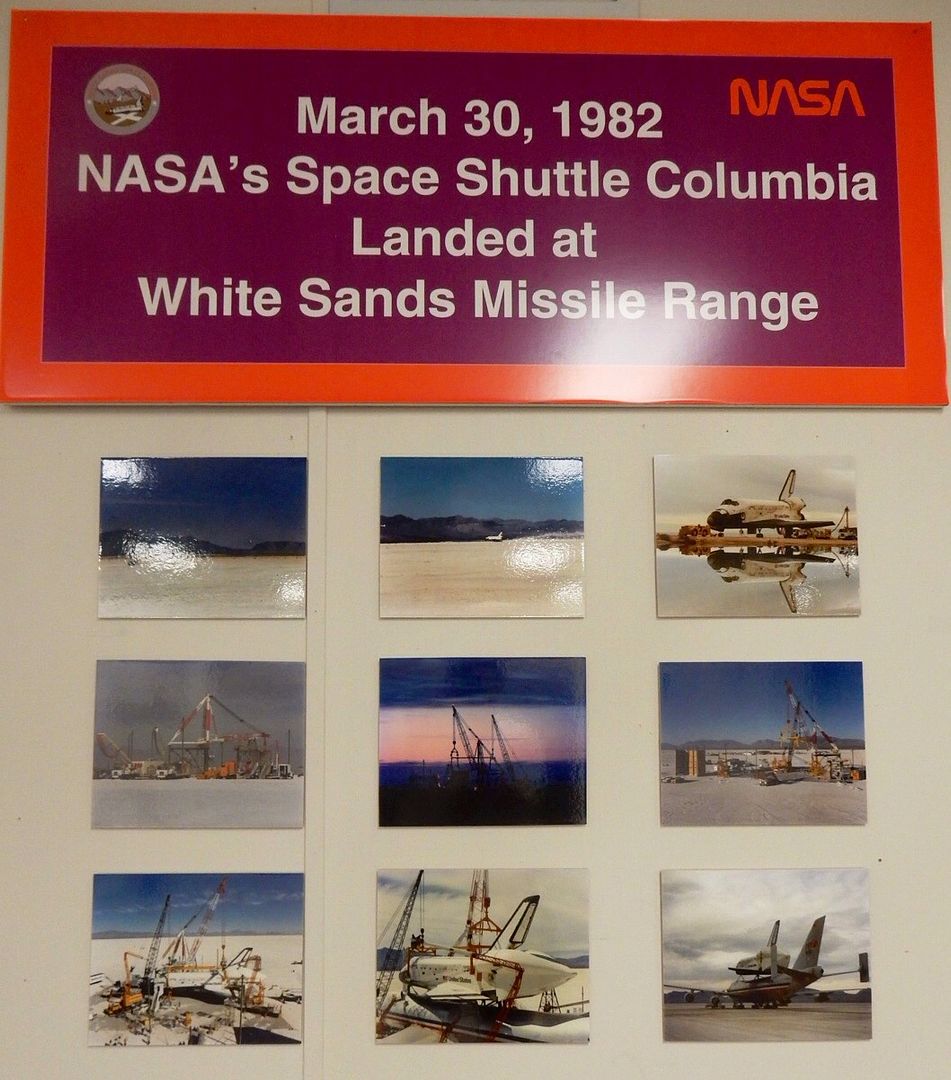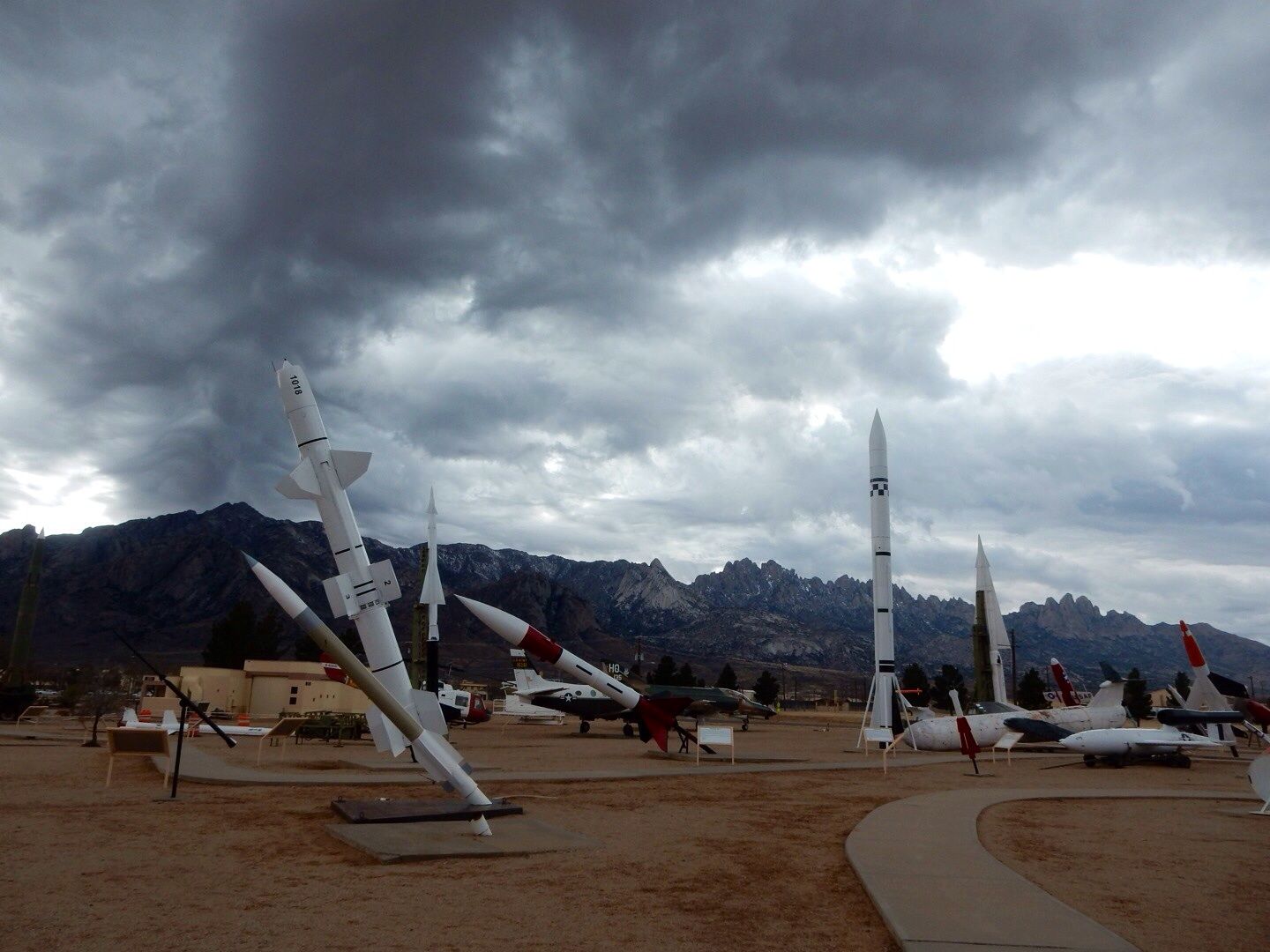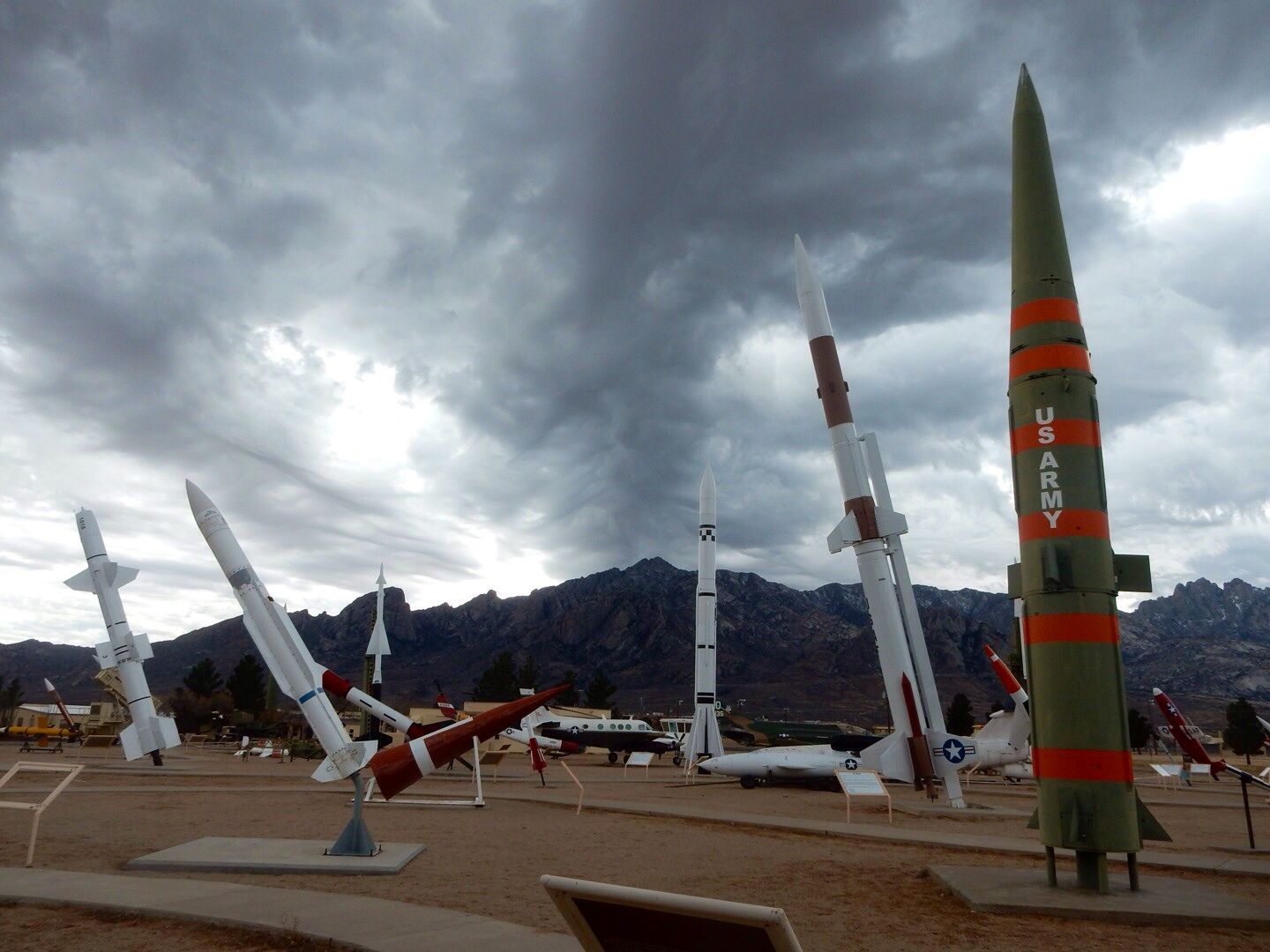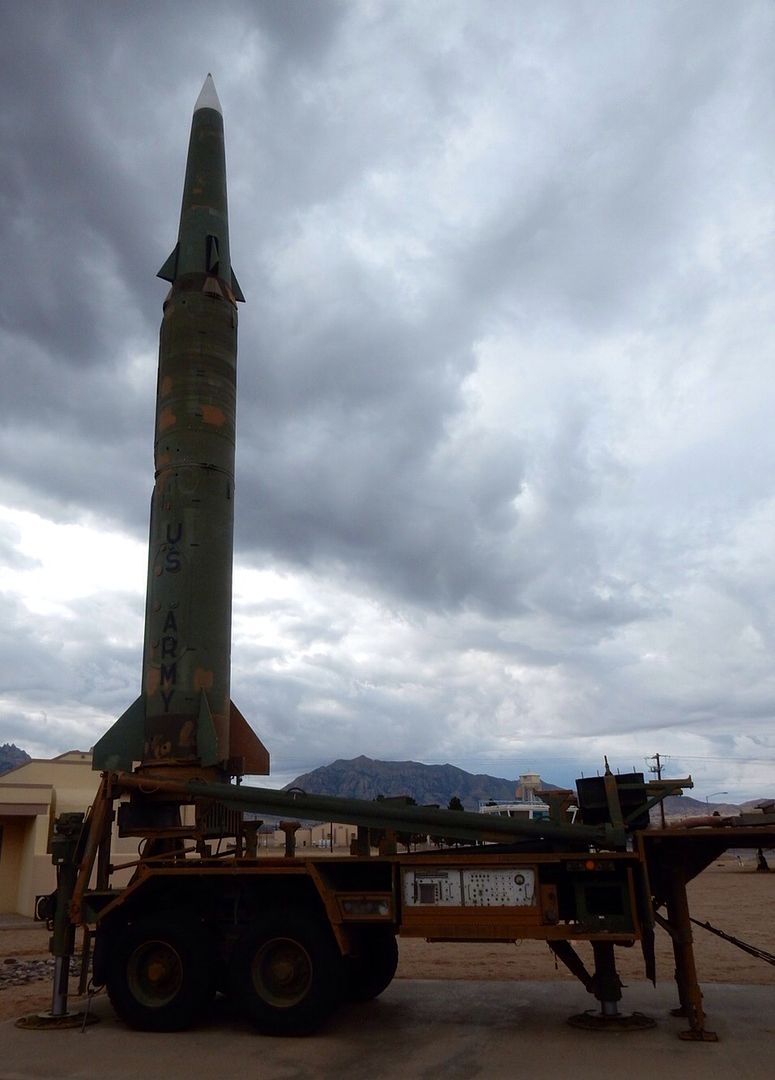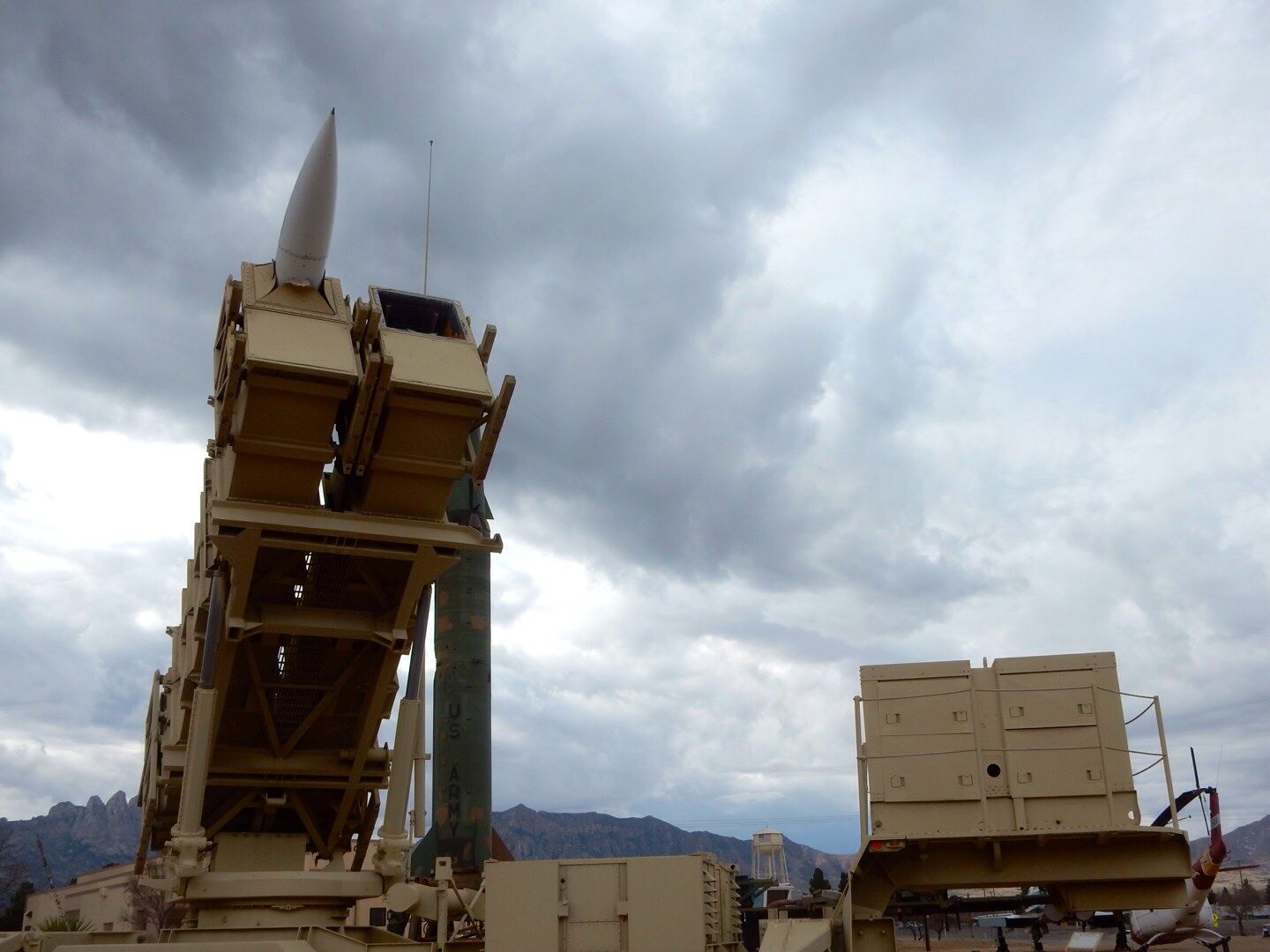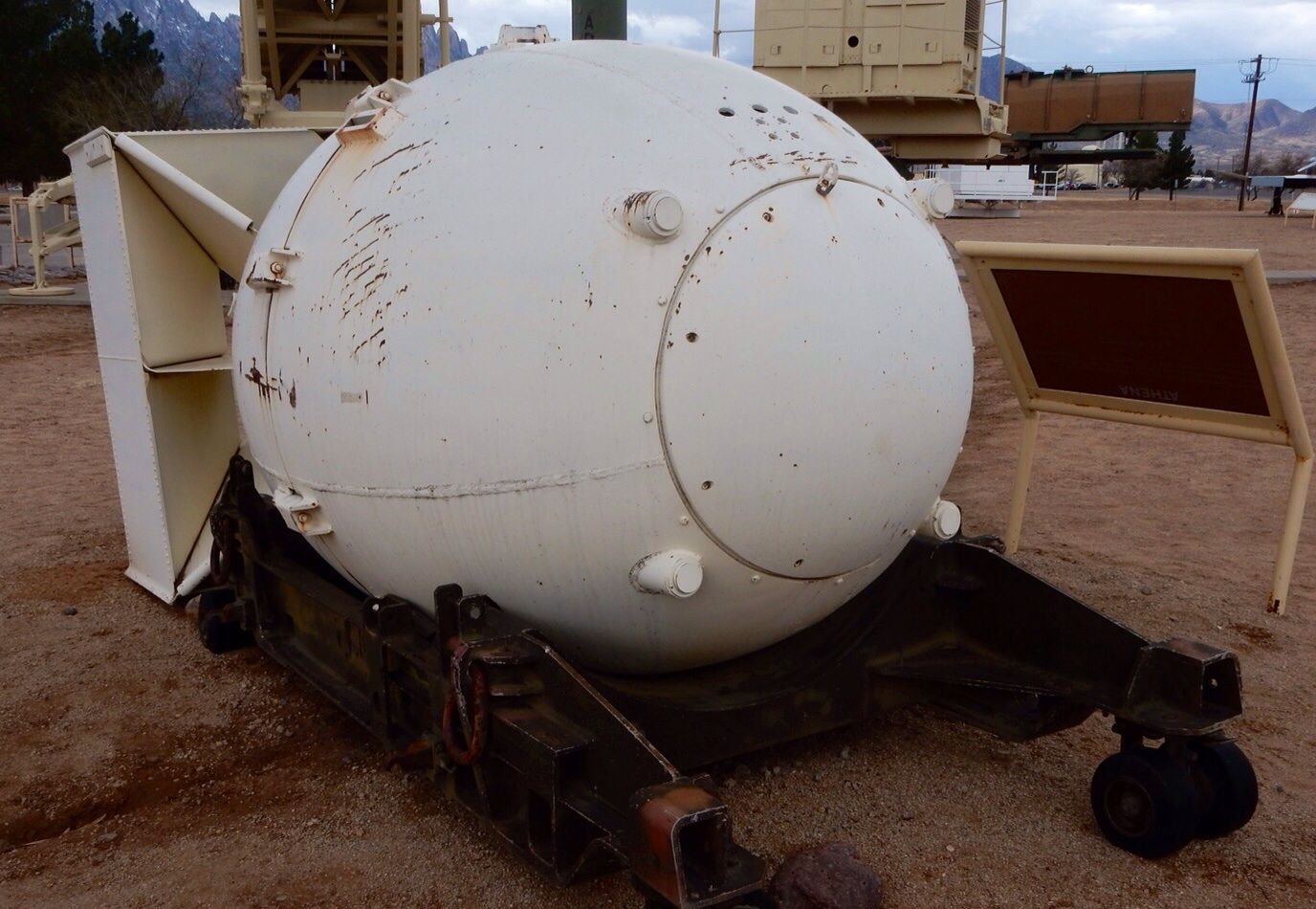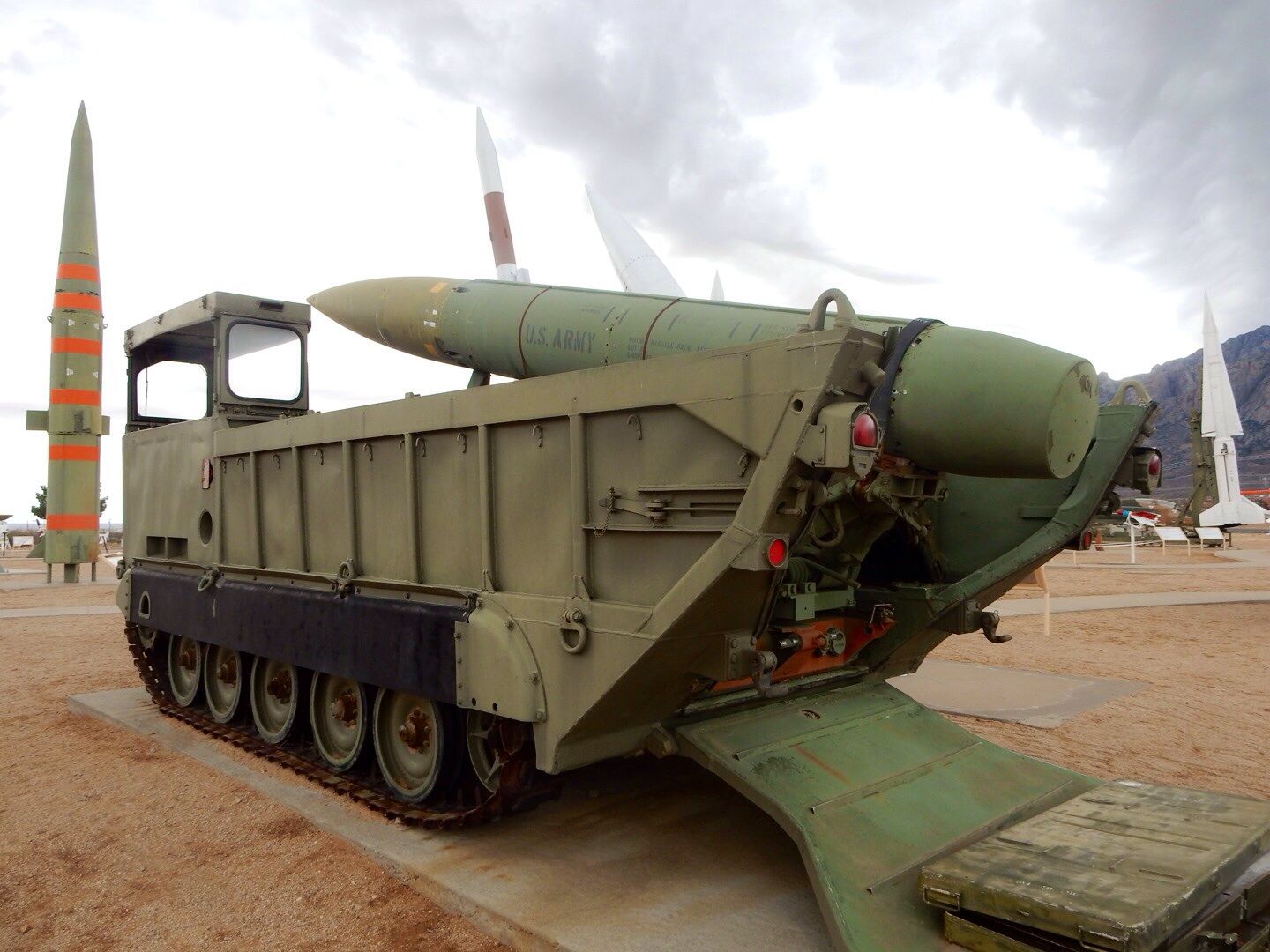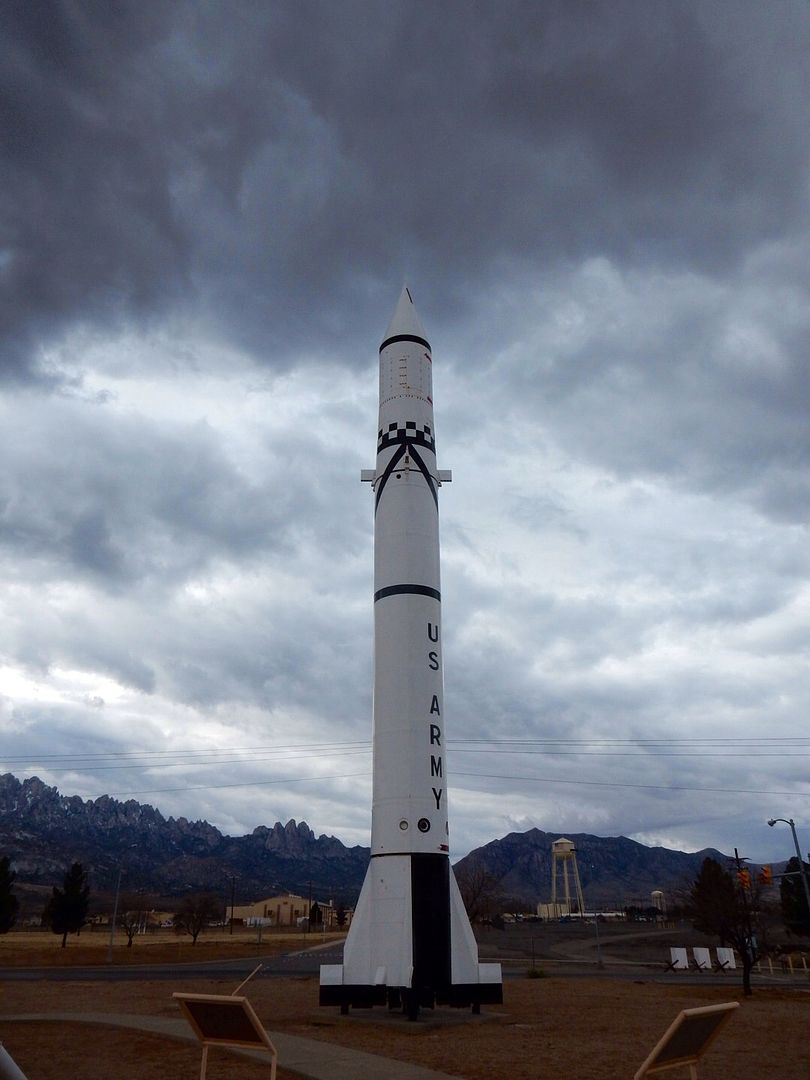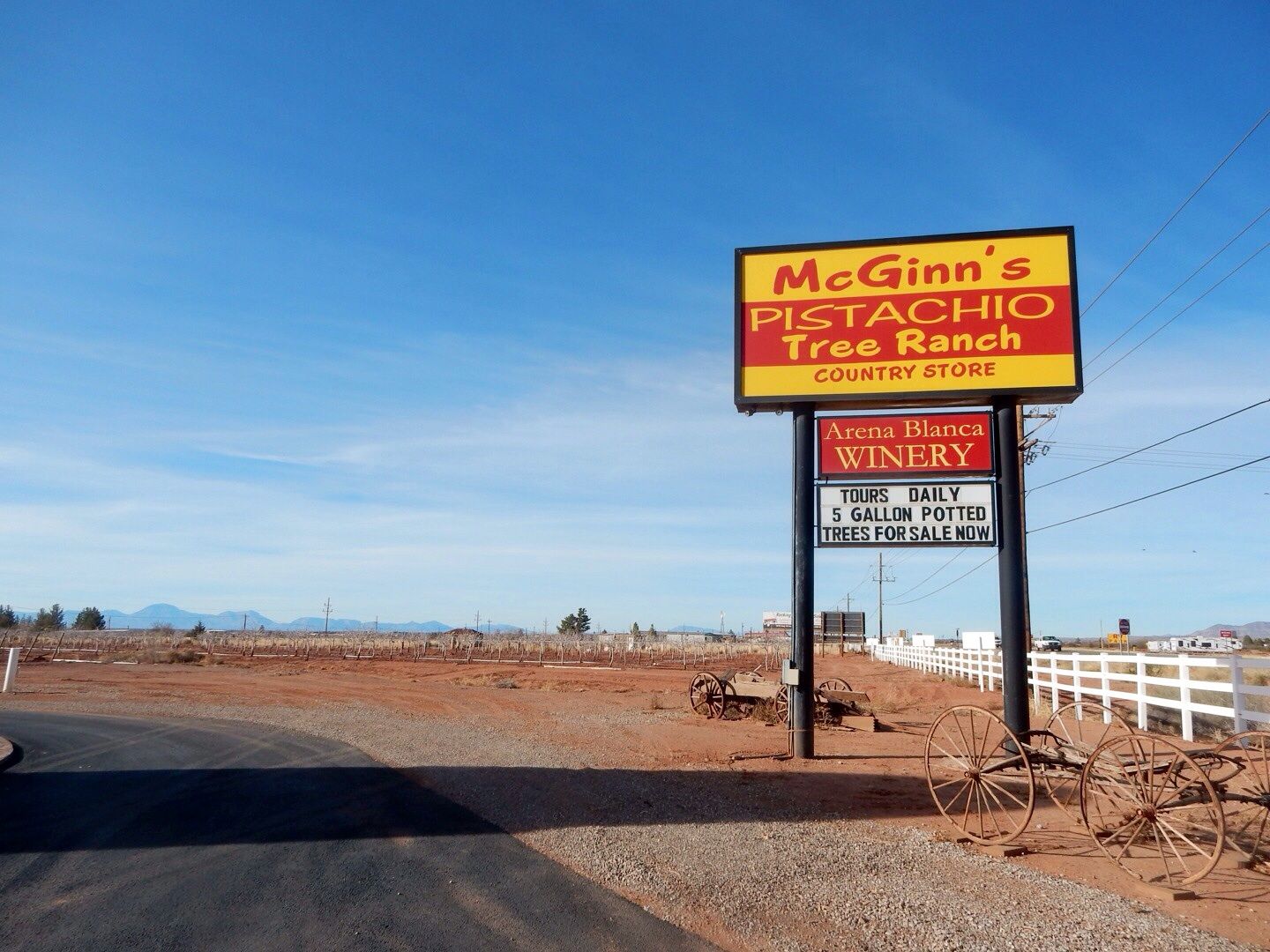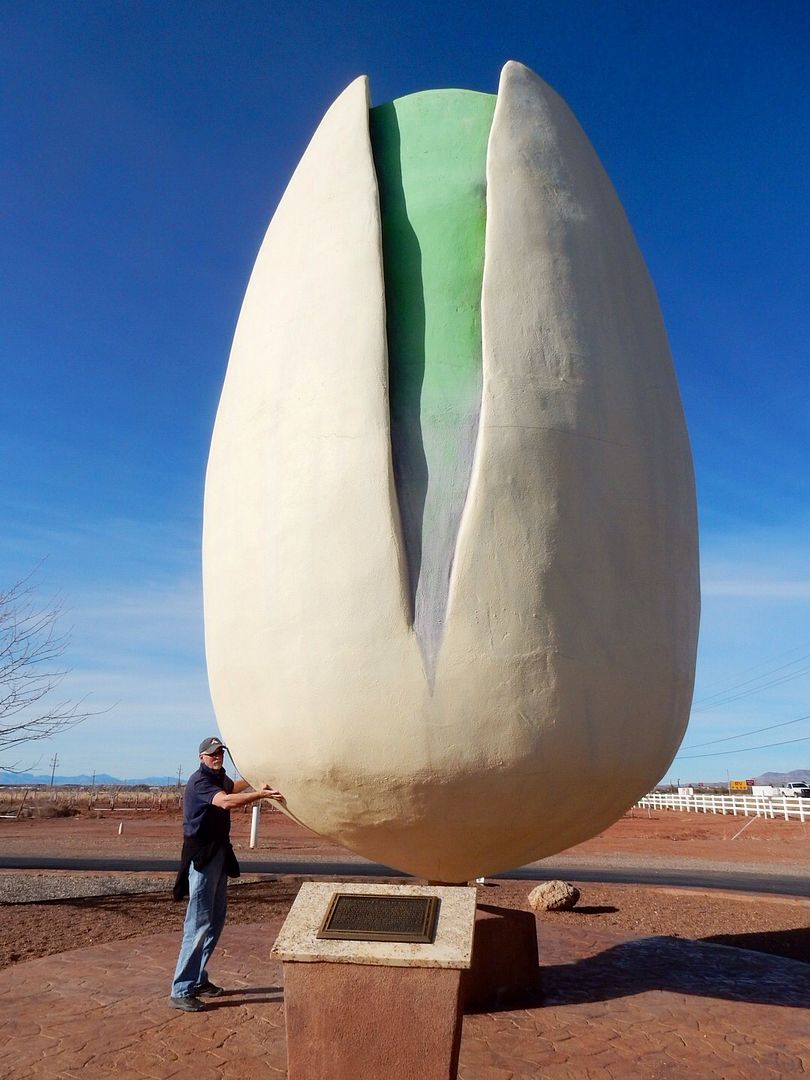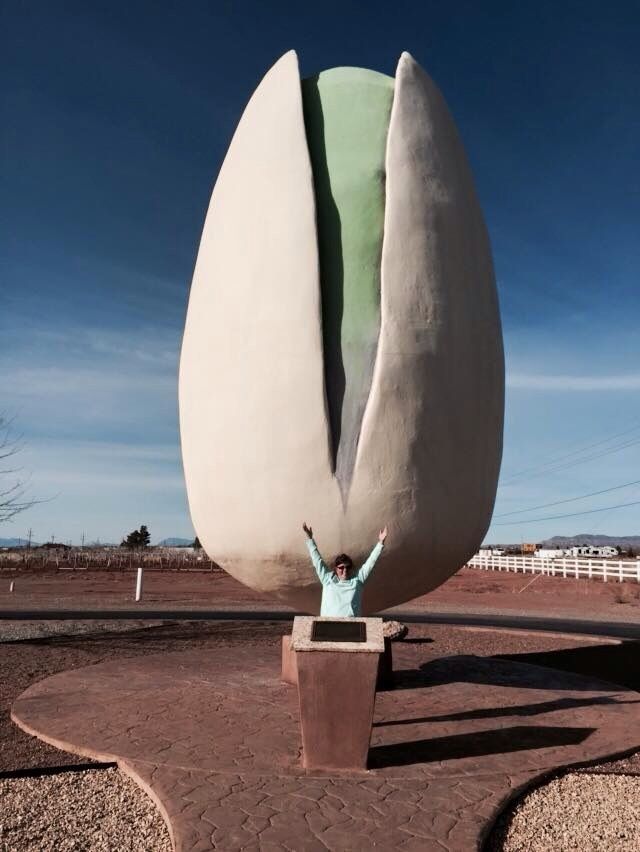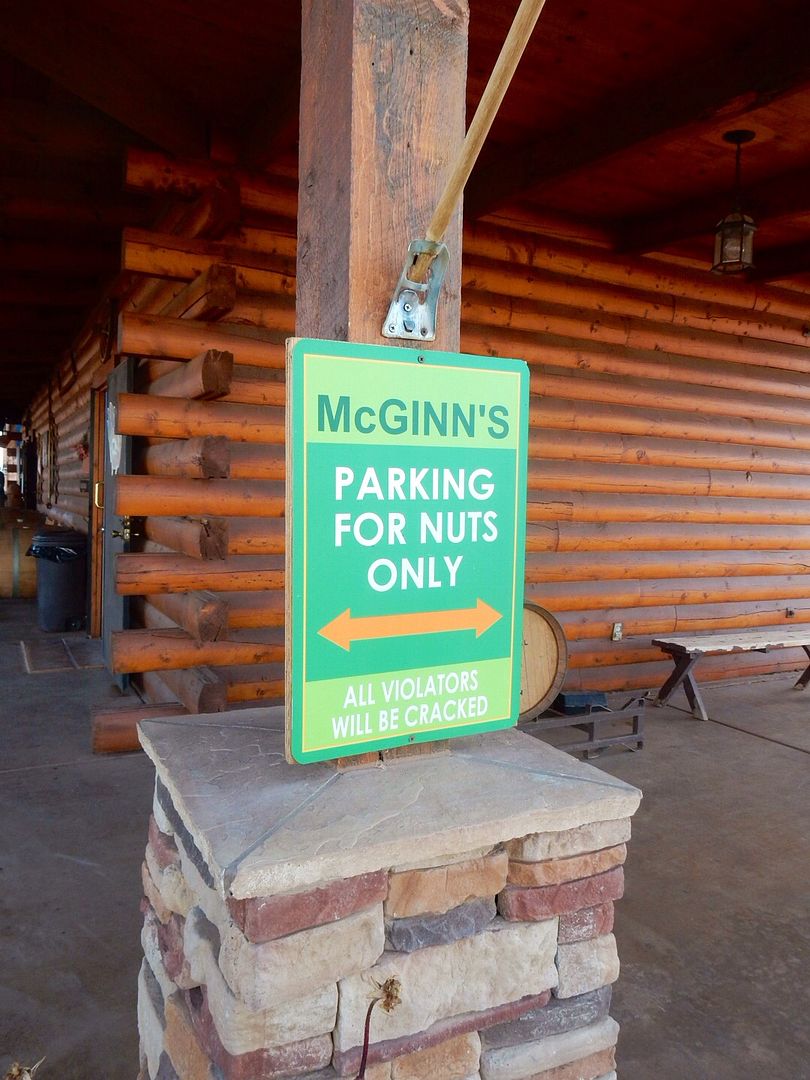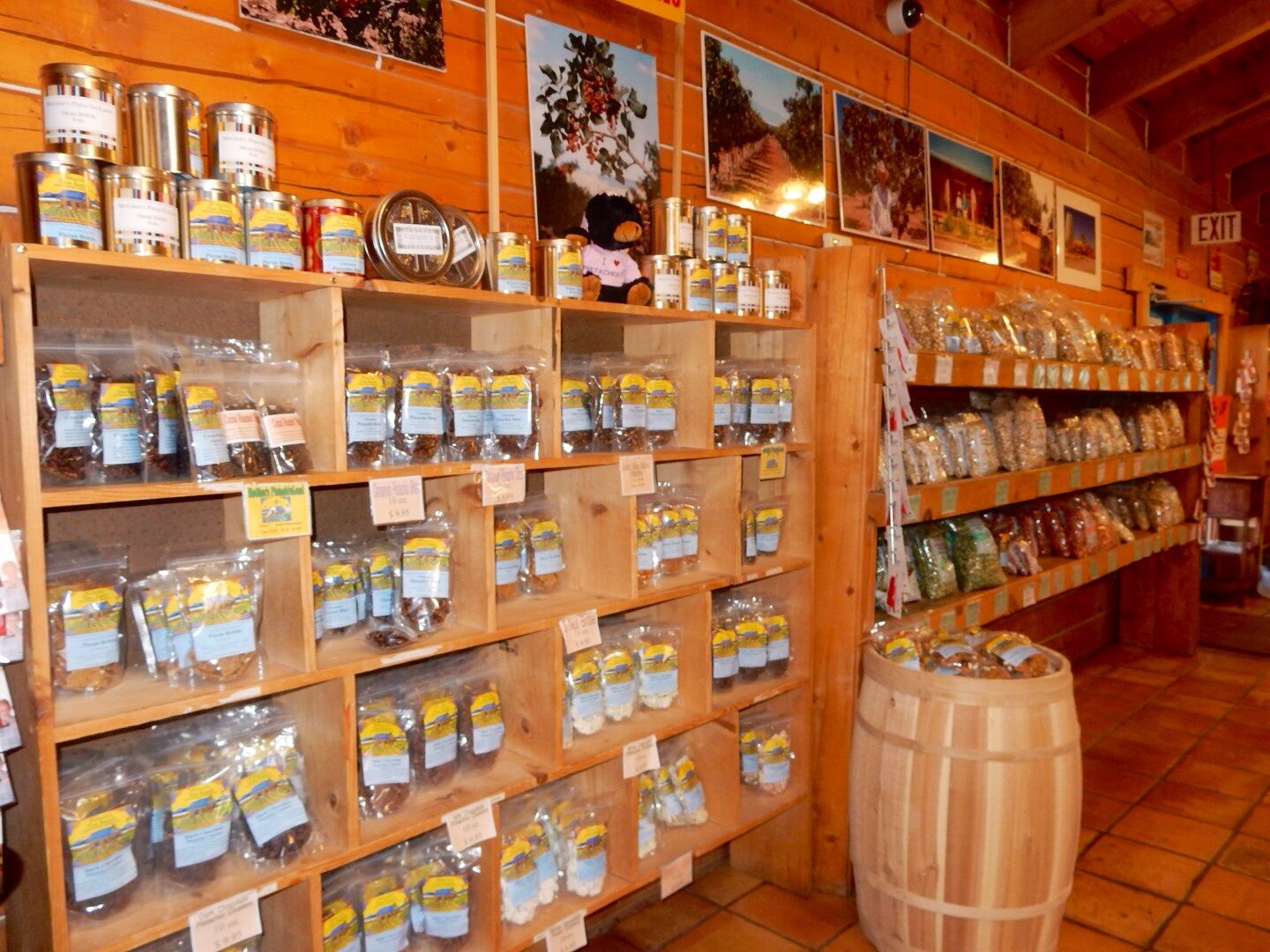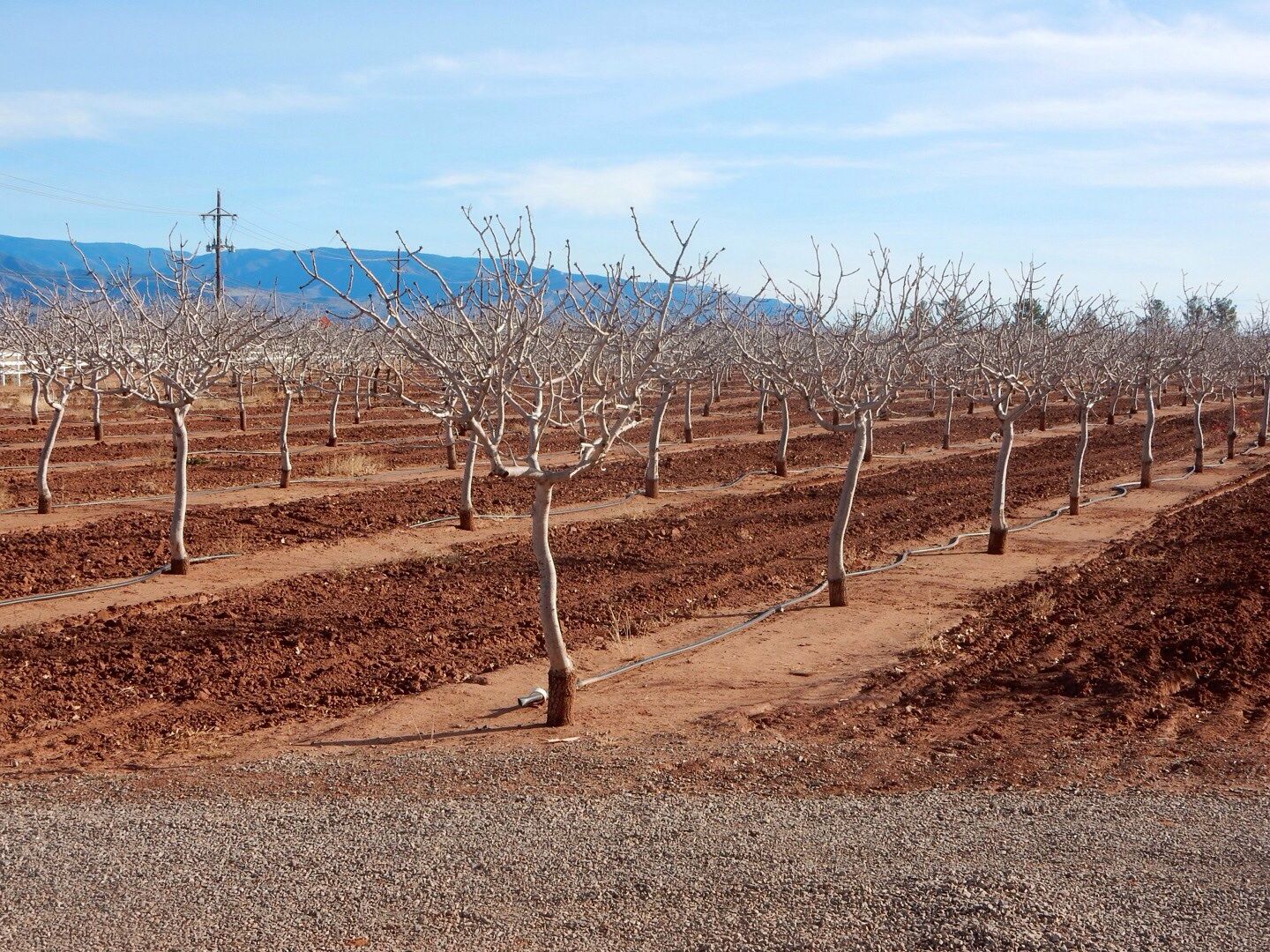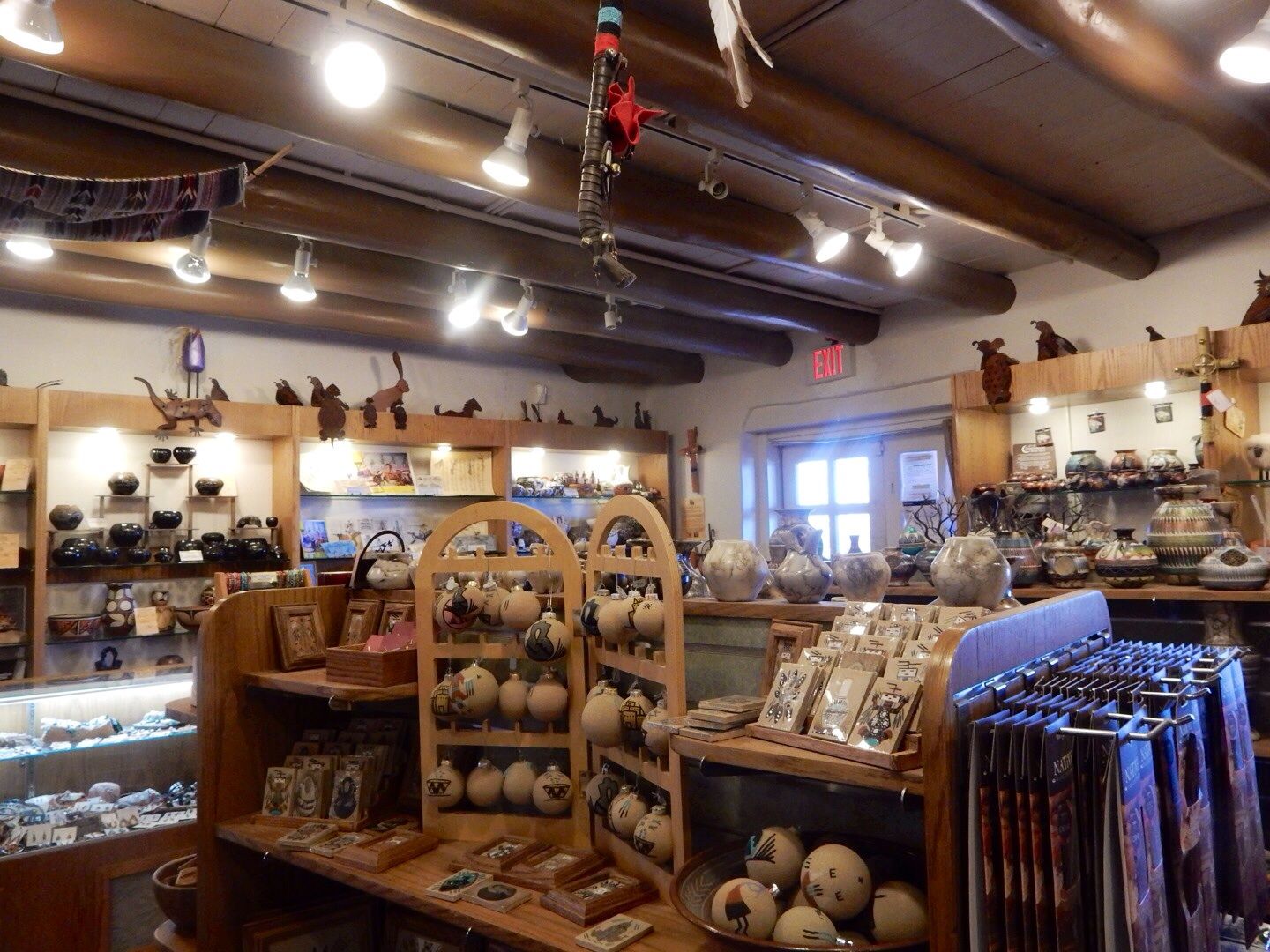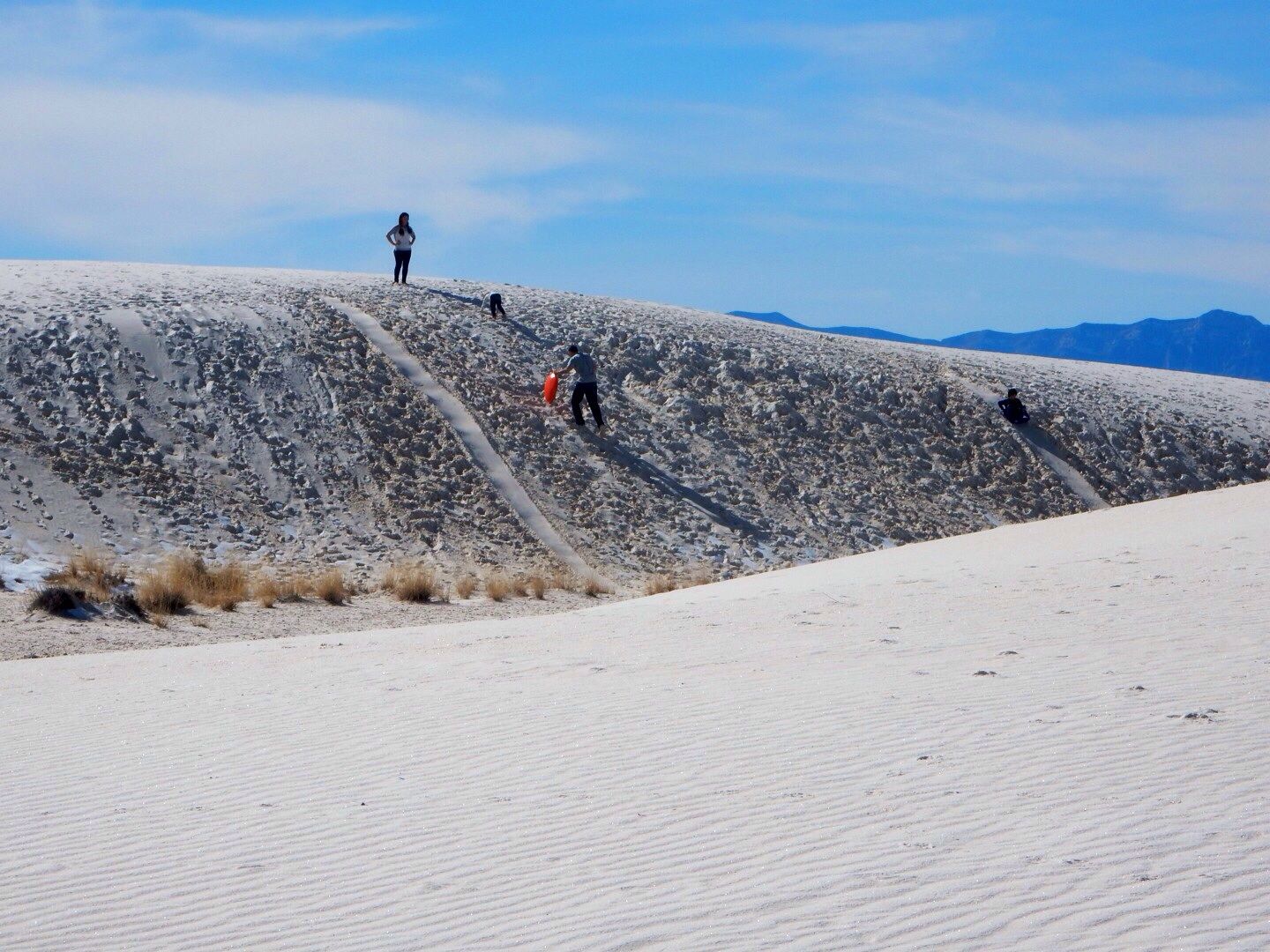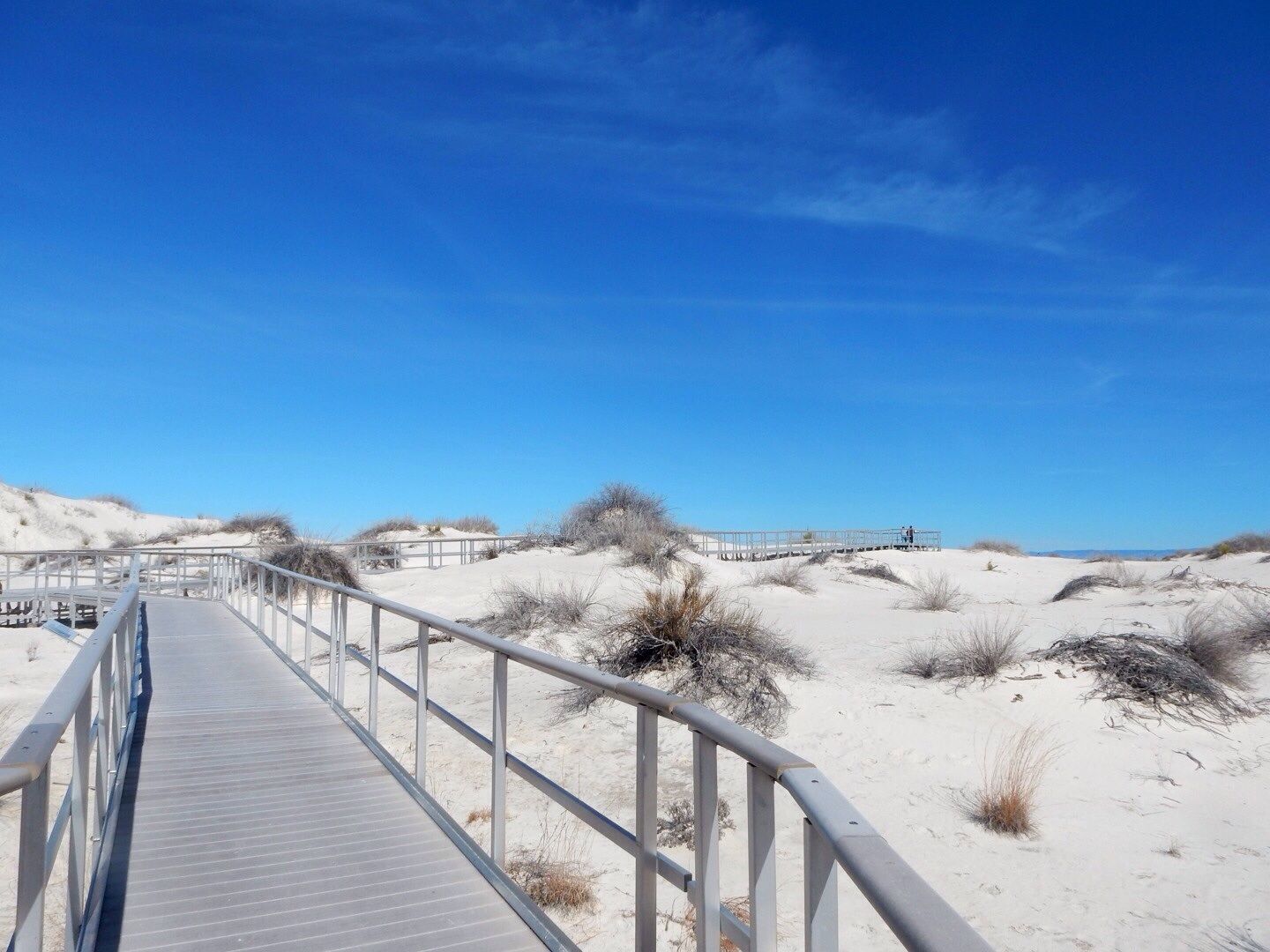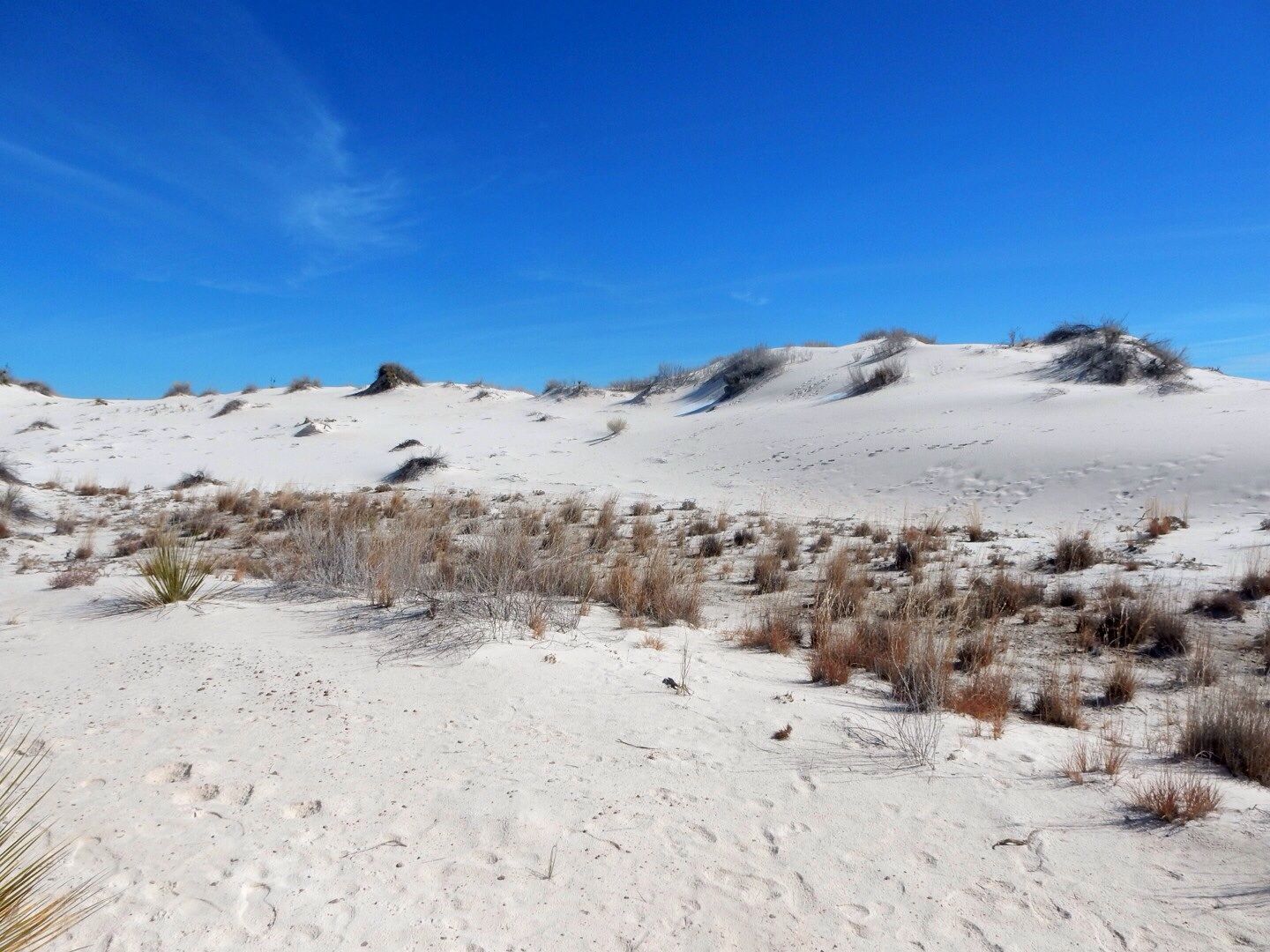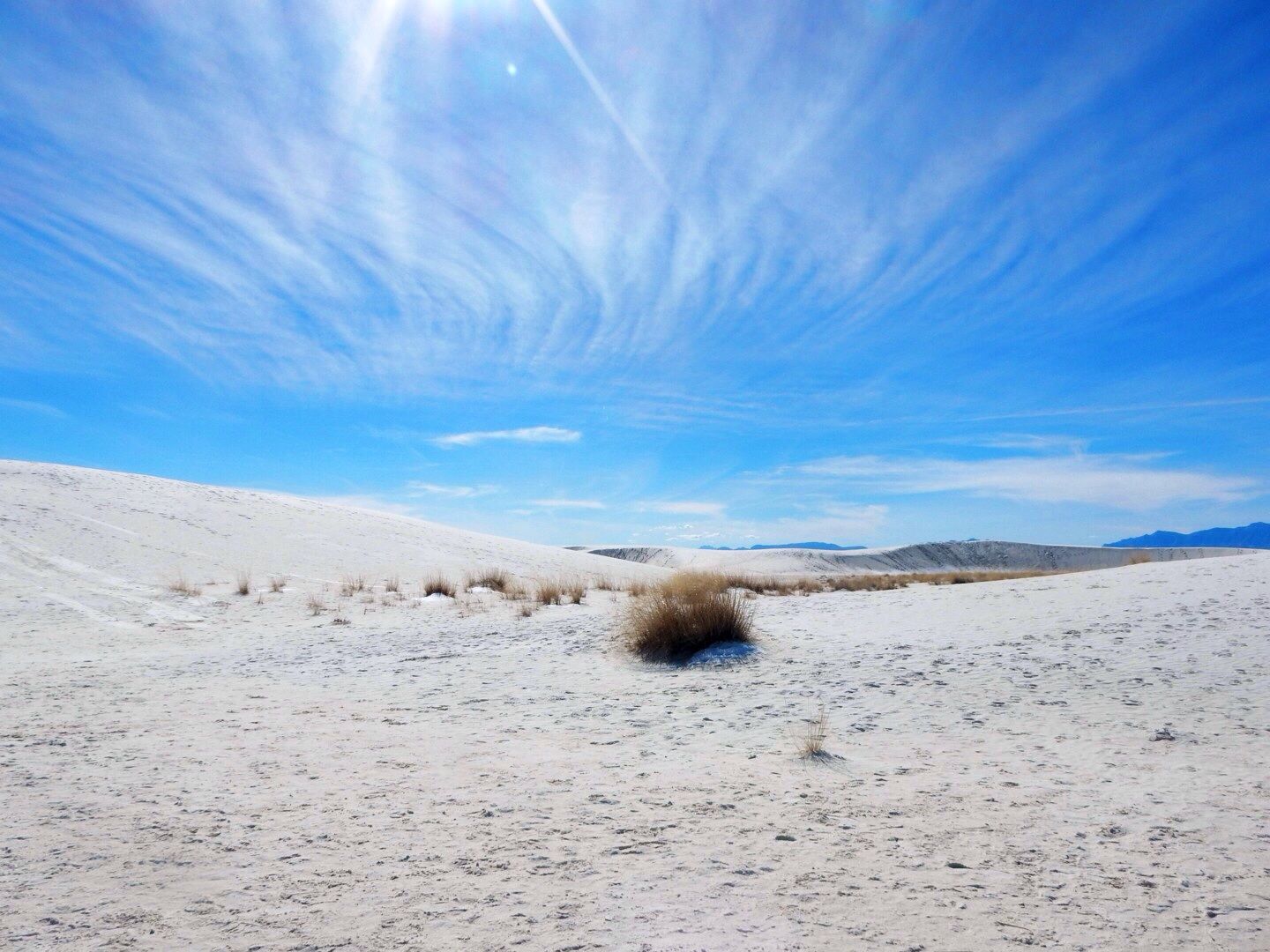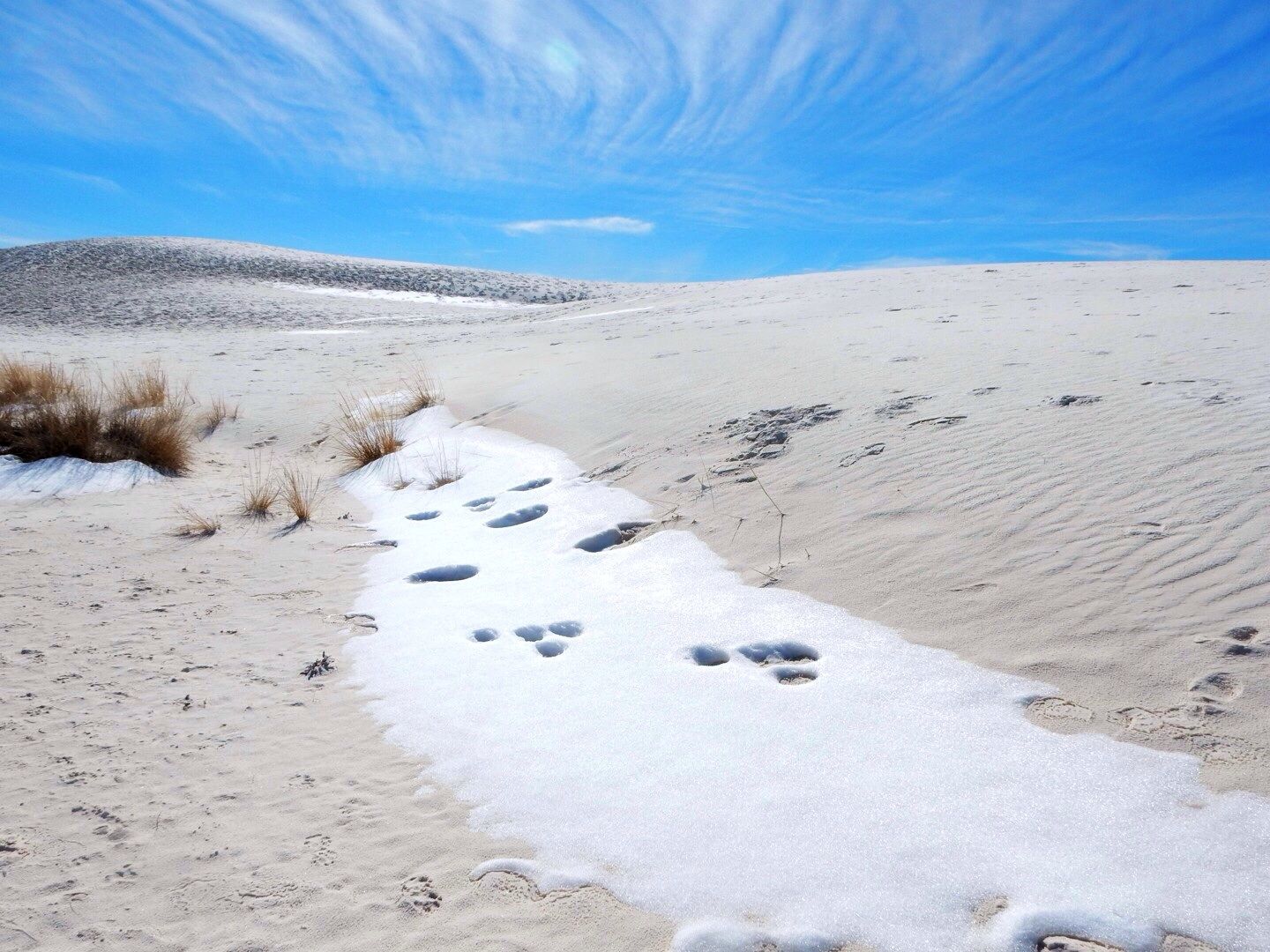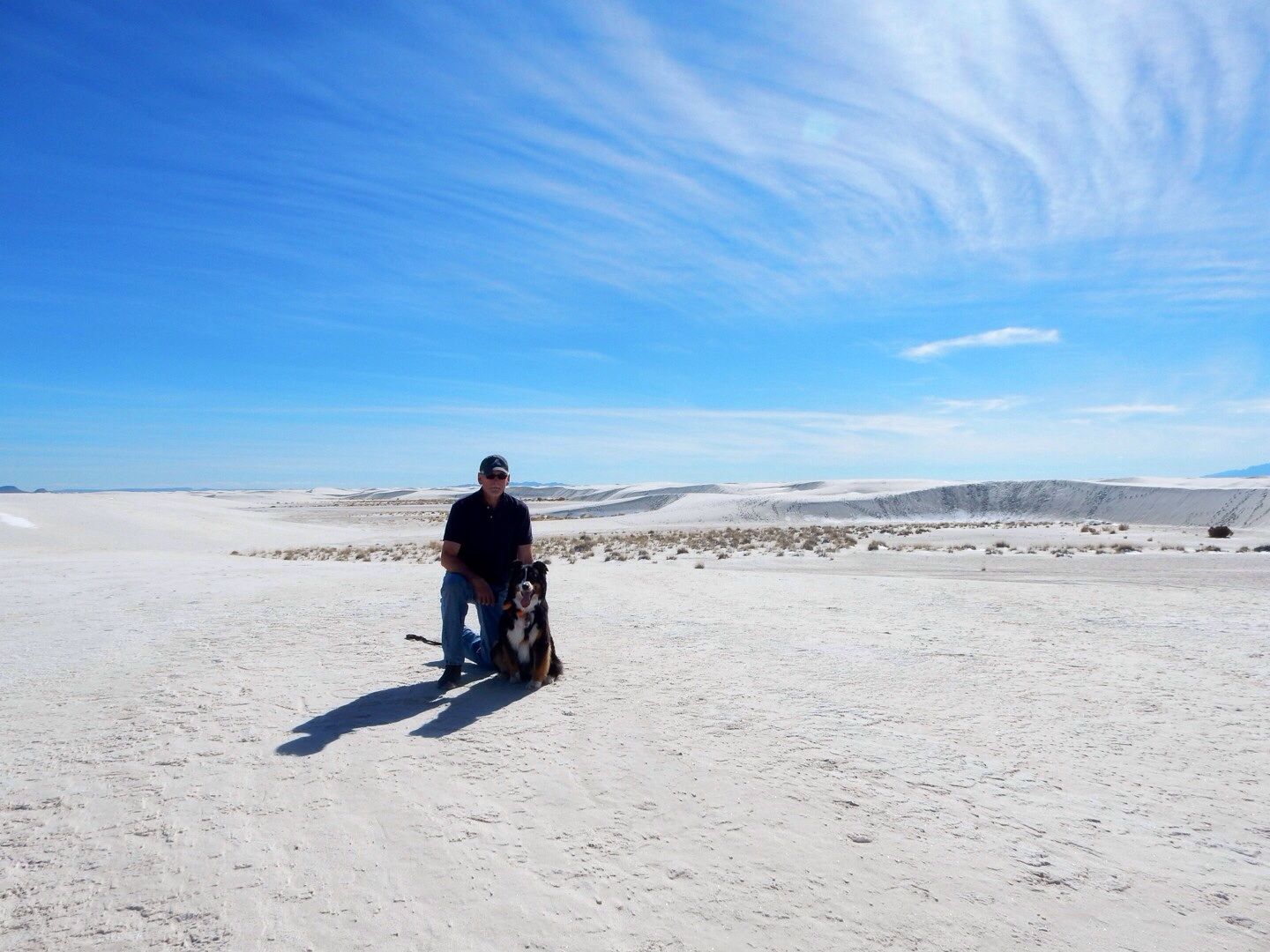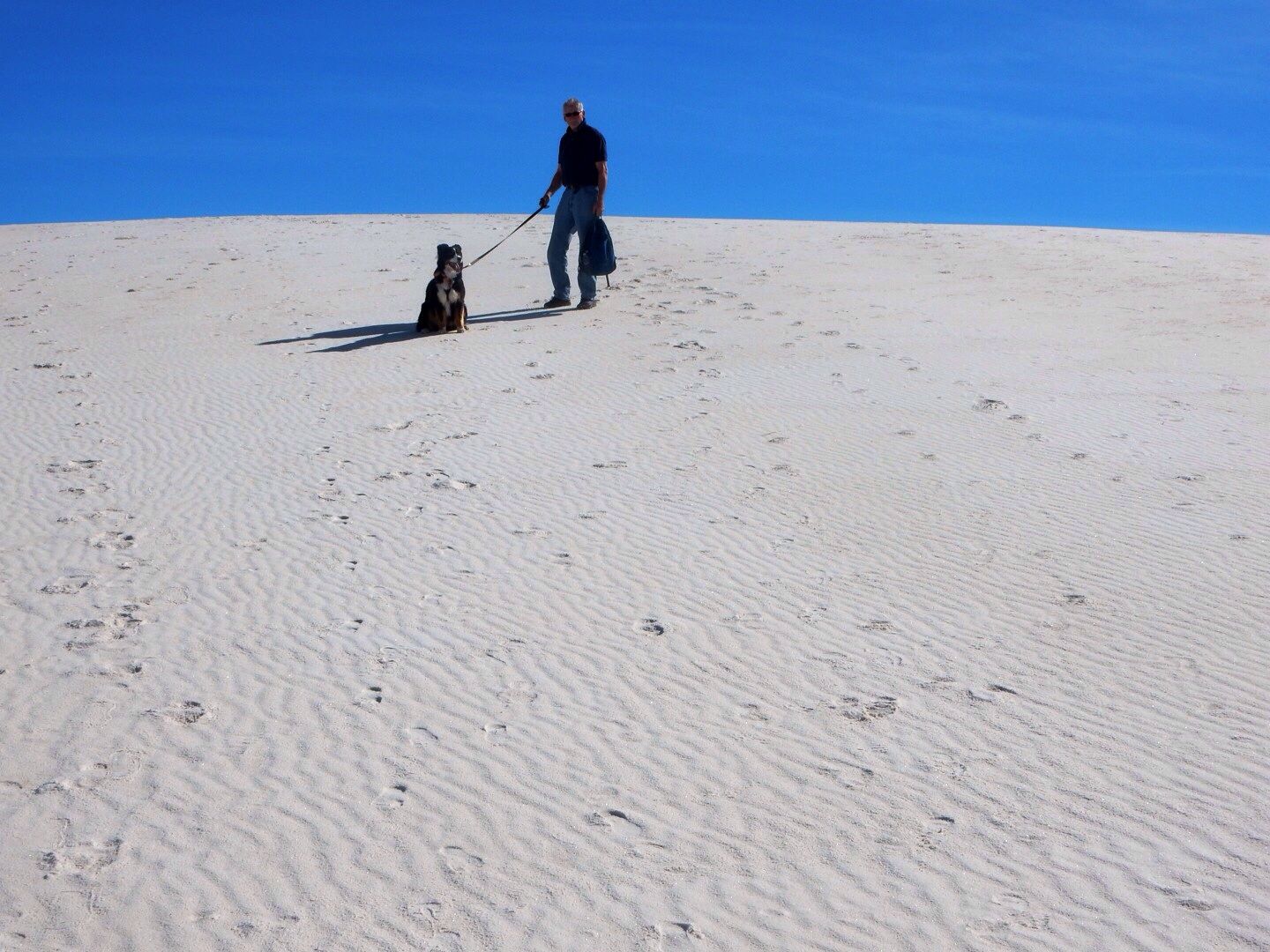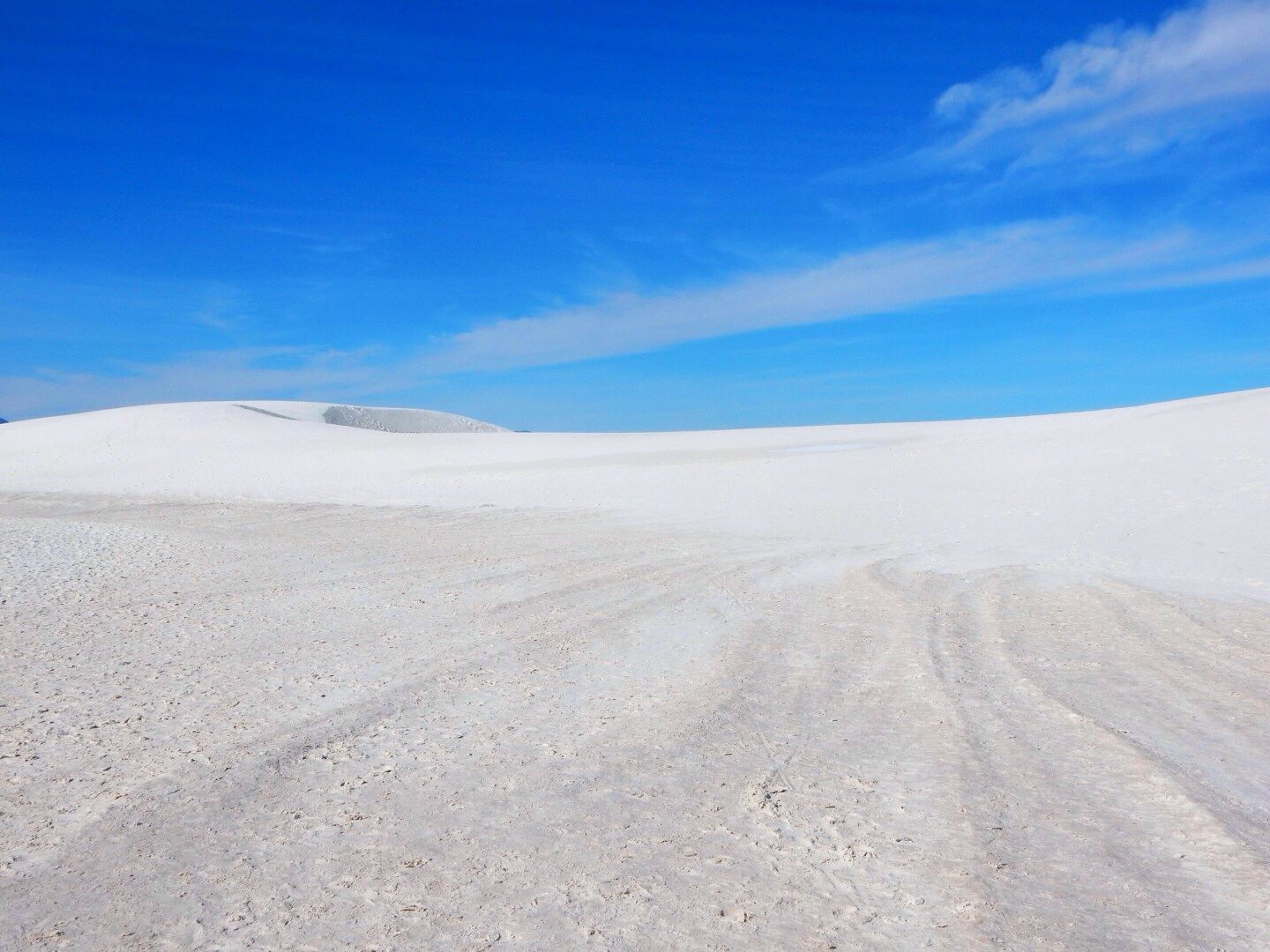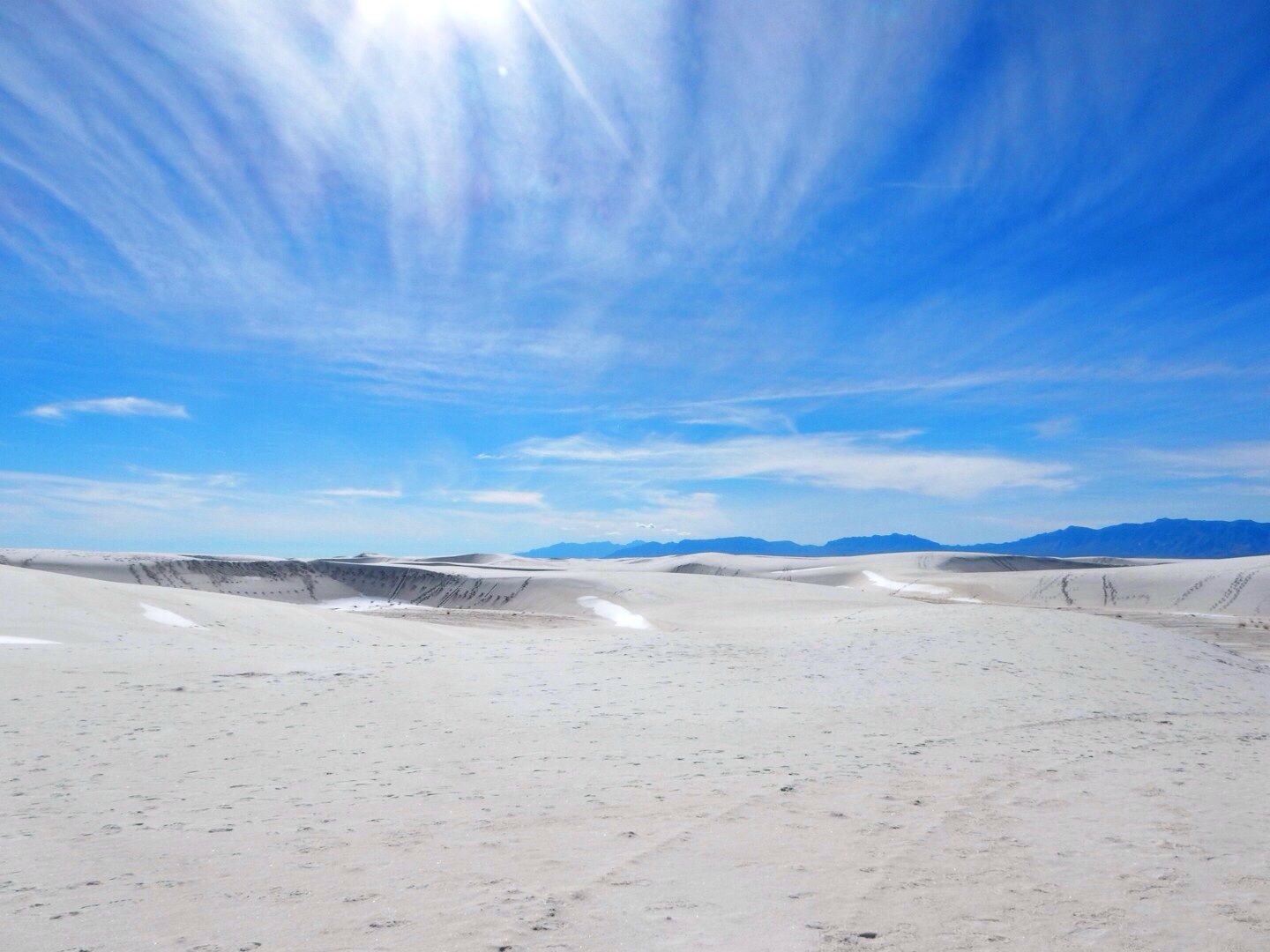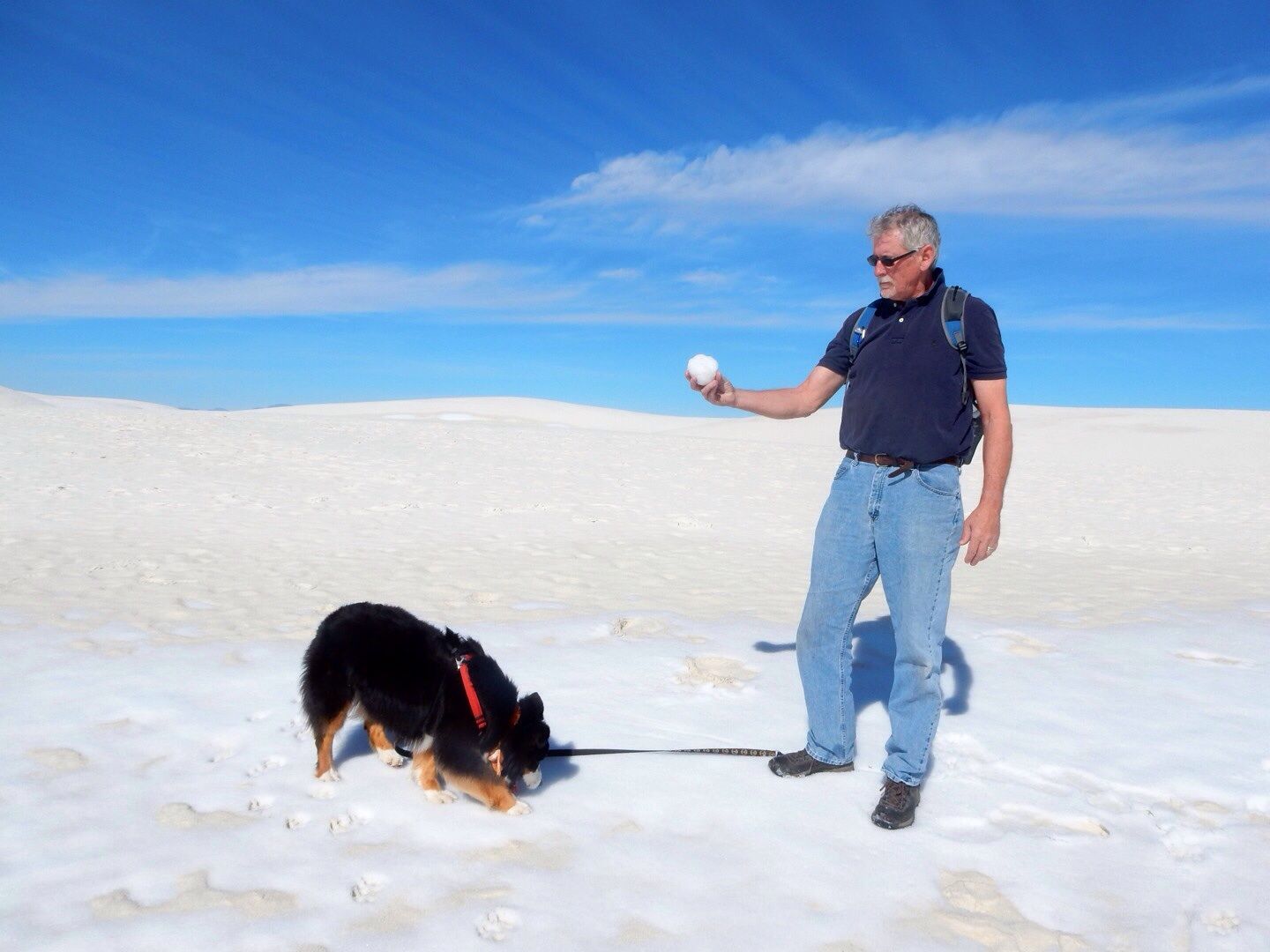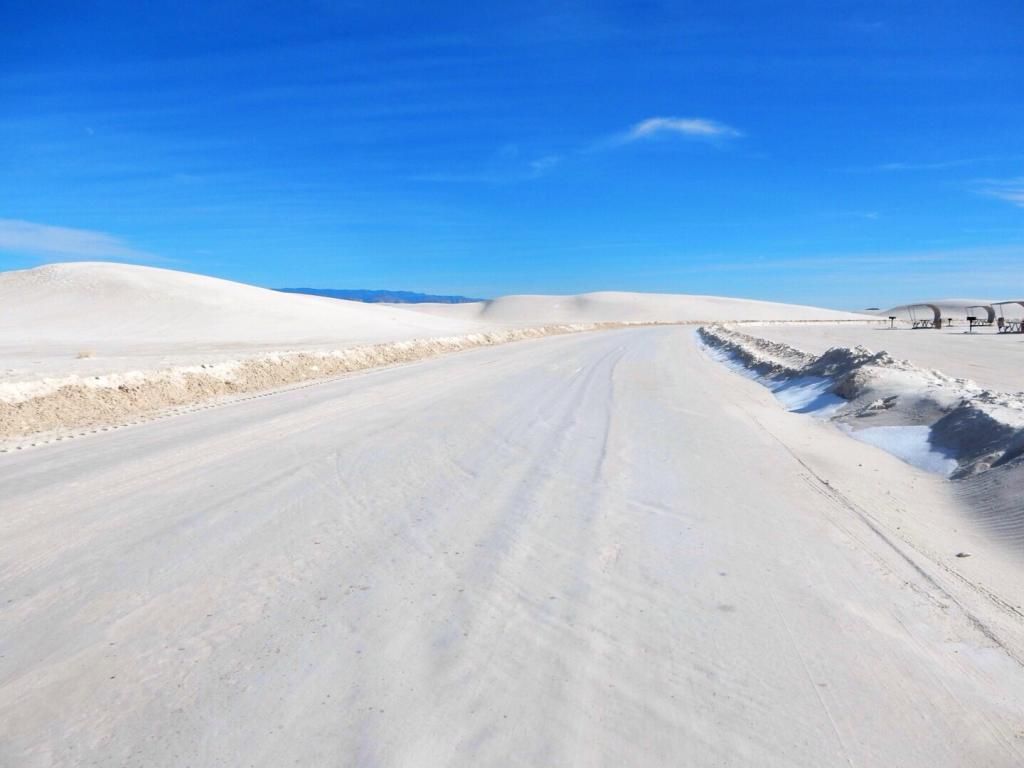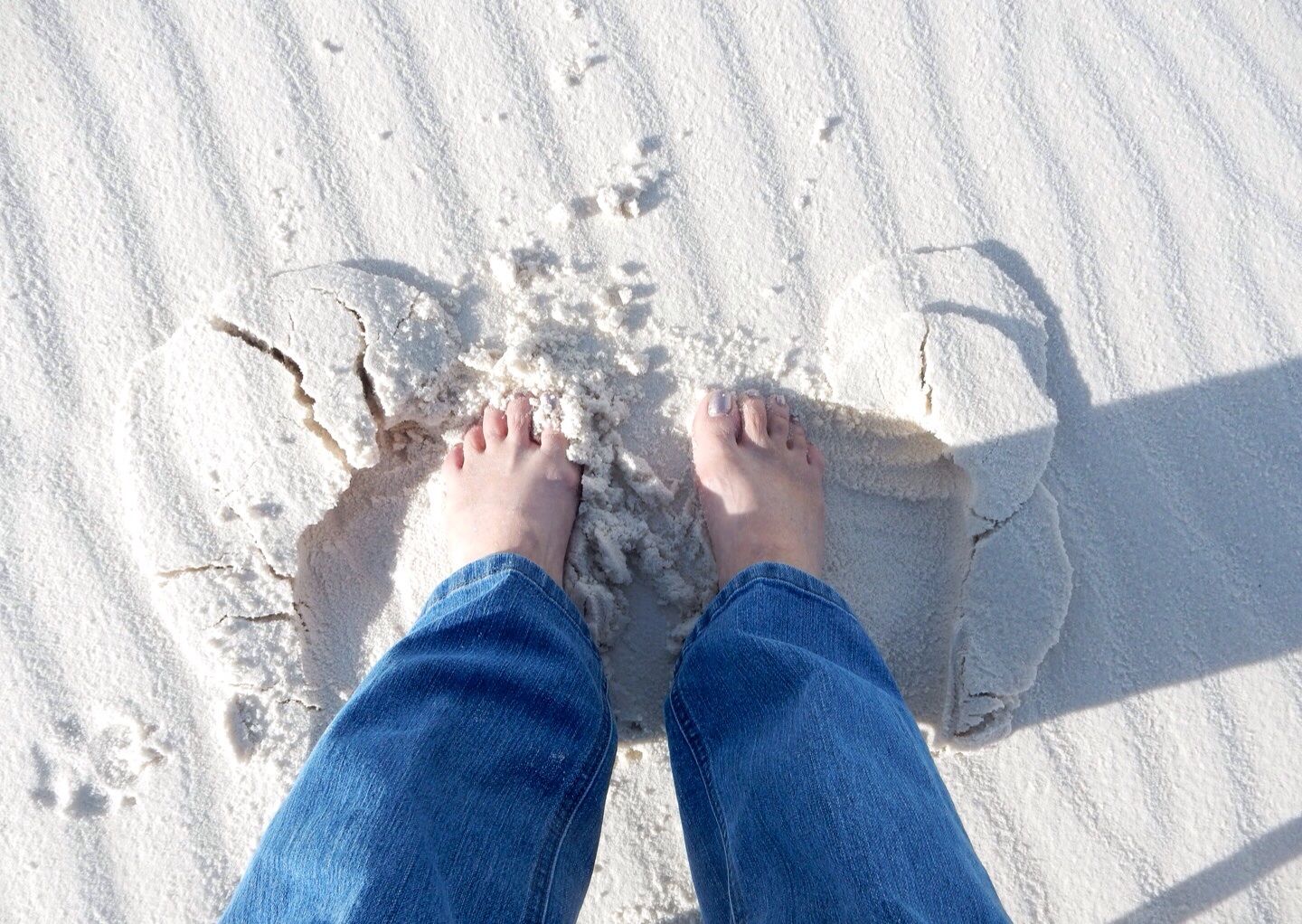On our way home (back to Hacienda RV Park) from the White Sands Missile Museum, we wanted to stop somewhere for a bite to eat. So, I did what I usually do in these situations, checked out what restaurants were nearby to our current location using UrbanSpoon.
One minor disadvantage of full-time RVing is not knowing what or where the local, great-place-to-eat, restaurants are. We have found the UrbanSpoon app that I have on my iPhone extremely reliable in restaurant ratings.
On this particular day, we wanted some basic late lunch food that was nearby and inexpensive. I saw that The Burger Nook had a 92% "like" rating and was only a few miles away from where we were. Perfect! We drove there and saw their sign.
The restaurant is located in a strip mall (where about half of the storefronts are closed).
I told John that maybe we didn't want to go in. His response was that some of the best food he had eaten was from "hole in the wall" places, like this one seemed to be. So we went in and ordered some burgers, fries, and drinks. About half of the customers that came in while we were there ordered take out and the other half ate in the restaurant (which is what we did).
Then we started looking around the place and saw many articles and awards about this small, hamburger joint. The 92% rating started to make sense.
After we ate our burgers, we agreed that they were fantastic!
So, if you are ever in the northeastern part of Las Cruces (near I-25) and you are looking for a fabulous burger, this is the place! They are open Tuesday through Saturday, 10 am to 5 pm. The number is 575-523-9806 if you want to order ahead or take out.
Website: www.burgernook.com
Friday, January 30, 2015
White Sands Museum & Missile Park - 1/29/15
Today we visited the White Sands Museum & Missile Park, located at the White Sands Missile Range, about 25 miles north of Las Cruces, NM. The Museum is located on a military installation and you must check in at the Reception Center next to the entrance gates where you are issued a visitor permit. Photo ID is required and if you want to drive your car onto the base, you must provide current registration and proof of insurance for the vehicle.
This is the largest overland military test range (3,200 square miles) and was established in 1945. Photos are permitted inside the museum (but not of the military base). The museum has a wide range of exhibits from prehistoric man to the NASA space program.
Pueblo Room. Evidence of inhabitants in this area dating back 10,000 years have been found on the range.
Ranch Room. Ranching was a common way of life here in the 1800s.
The first atomic bomb was tested at White Sands Missile Range on July 14, 1945, in preparation for the bombing of Hiroshima and Nagasaki to end World War II.
Smaller missiles are displayed in the Museum with the larger ones on display in the Missile Park outside.
Cinetheodolite, a sophisticated camera used to film missile tests, was in used since the missile range opened. Scientists could use the films to calculate the position, speed, and acceleration of the missiles. Of course, more sophisticated equipment was used in later years.
WAC Corporal, the first missile launched at White Sands and the first man-made object to leave the earth's atmosphere (10/11/45).
Dogs were used to help track down missile debris after some tests.
Stinger missile used for various applications.
Navy Room.
The only president to visit White Sands Missile Range, this display commemorates JFK's visit in June of 1963. He observed the testing of several missiles while on-site.
Vega Target Control Sysems (1973).
Ben Burtt of Lucas Films presented this Darth Vader helmet to White Sands in 1978 in appreciation for sound recordings of missiles being test-fired. Some of the sounds were used in Star Wars, for which Burtt won an Academy Award.
NASA's space shuttle landed at White Sands in March, 1982.
Photos of the Missile Park are permitted but must have the mountains in the background (in other words, you cannot take photos of the military site and missile range).
Pershing II: Highly accurate 2-stage missile first fired in 1982; major contributor to signing of Intermediate Range Nuclear Forces treaty between the U.S.S.R and the U.S. There were 234 of them destroyed by 1991. This is one of 15 that was disarmed and on display.
Patriot: Long-rang, all-altitude, all-weather, surface-to-air missile that can detect, target, and shoot down attacking missiles or incoming aircraft. The first firing was at White Sands in 1970. They were known as "scud busters" when used in the Middle East.
Fat Man Bomb Casing: Little Boy was the first plutonium bomb and was dropped on Hiroshima, Japan, on August 6, 1945. Fat Boy was the second (and last) nuclear weapon used in warfare. This is a model of the original Fat Boy bomb.
MK5 Guided Missile.
Balloon Launched Decelerator Test Vehicle, used to test the Viking Mars Lander Decelerator in a simulated atmosphere of Mars (1972).
Lance, highly mobile, short/medium-range surface-to-surface missile system using a self-propelled launcher (1965).
Redstone, the Army's largest surface-to-surface ballistic missile (1958), replaced by the Pershing in the 1960s.
In a building located between the Museum and the Missile Park is the V-2 exhibit.
Toward the end of WWII, German scientist, Wernher von Braun, and most of his staff of scientists and engineers surrendered to the U.S. With them can the V-2 missiles (300 railroad freight cars of captured components that were shipped to White Sands) that they had designed and Nazi Germany used to bomb England (1,115 missiles) and enemy countries of Germany (1,950) on the European continent. This was the most advanced and complex missile of the time and served as the research platform that lead to the early stages of the Space Age.
The historical and educational value of the Museum and Missile Park is immense. I had heard about many of these weapons and the history/development of them, but seeing the displays and the actual devices was pretty incredible. All of them on display were tested at White Sands and there is extensive documentation on each.
Admission is free (but you must have photo ID and check in at the Reception office). Both John and I really enjoyed the history lesson today about this time in our country's history.
Website: www.wsmr-history.org
This is the largest overland military test range (3,200 square miles) and was established in 1945. Photos are permitted inside the museum (but not of the military base). The museum has a wide range of exhibits from prehistoric man to the NASA space program.
Pueblo Room. Evidence of inhabitants in this area dating back 10,000 years have been found on the range.
Ranch Room. Ranching was a common way of life here in the 1800s.
The first atomic bomb was tested at White Sands Missile Range on July 14, 1945, in preparation for the bombing of Hiroshima and Nagasaki to end World War II.
Smaller missiles are displayed in the Museum with the larger ones on display in the Missile Park outside.
Cinetheodolite, a sophisticated camera used to film missile tests, was in used since the missile range opened. Scientists could use the films to calculate the position, speed, and acceleration of the missiles. Of course, more sophisticated equipment was used in later years.
WAC Corporal, the first missile launched at White Sands and the first man-made object to leave the earth's atmosphere (10/11/45).
Dogs were used to help track down missile debris after some tests.
Stinger missile used for various applications.
Navy Room.
The only president to visit White Sands Missile Range, this display commemorates JFK's visit in June of 1963. He observed the testing of several missiles while on-site.
Vega Target Control Sysems (1973).
Ben Burtt of Lucas Films presented this Darth Vader helmet to White Sands in 1978 in appreciation for sound recordings of missiles being test-fired. Some of the sounds were used in Star Wars, for which Burtt won an Academy Award.
NASA's space shuttle landed at White Sands in March, 1982.
Photos of the Missile Park are permitted but must have the mountains in the background (in other words, you cannot take photos of the military site and missile range).
Pershing II: Highly accurate 2-stage missile first fired in 1982; major contributor to signing of Intermediate Range Nuclear Forces treaty between the U.S.S.R and the U.S. There were 234 of them destroyed by 1991. This is one of 15 that was disarmed and on display.
Patriot: Long-rang, all-altitude, all-weather, surface-to-air missile that can detect, target, and shoot down attacking missiles or incoming aircraft. The first firing was at White Sands in 1970. They were known as "scud busters" when used in the Middle East.
Fat Man Bomb Casing: Little Boy was the first plutonium bomb and was dropped on Hiroshima, Japan, on August 6, 1945. Fat Boy was the second (and last) nuclear weapon used in warfare. This is a model of the original Fat Boy bomb.
MK5 Guided Missile.
Balloon Launched Decelerator Test Vehicle, used to test the Viking Mars Lander Decelerator in a simulated atmosphere of Mars (1972).
Lance, highly mobile, short/medium-range surface-to-surface missile system using a self-propelled launcher (1965).
Redstone, the Army's largest surface-to-surface ballistic missile (1958), replaced by the Pershing in the 1960s.
In a building located between the Museum and the Missile Park is the V-2 exhibit.
Toward the end of WWII, German scientist, Wernher von Braun, and most of his staff of scientists and engineers surrendered to the U.S. With them can the V-2 missiles (300 railroad freight cars of captured components that were shipped to White Sands) that they had designed and Nazi Germany used to bomb England (1,115 missiles) and enemy countries of Germany (1,950) on the European continent. This was the most advanced and complex missile of the time and served as the research platform that lead to the early stages of the Space Age.
The historical and educational value of the Museum and Missile Park is immense. I had heard about many of these weapons and the history/development of them, but seeing the displays and the actual devices was pretty incredible. All of them on display were tested at White Sands and there is extensive documentation on each.
Admission is free (but you must have photo ID and check in at the Reception office). Both John and I really enjoyed the history lesson today about this time in our country's history.
Website: www.wsmr-history.org
Thursday, January 29, 2015
McGinn's Pistachio Tree Ranch - 1/28/15
After visiting White Sands National Monument, we took a quick detour through Alamagordo, NM, to McGinn's Pistachio Tree Ranch.
The claim to fame for this place is the huge (30') pistachio nut monument in front. In fact, it is the largest in the world!
The monument is dedicated to Thomas Michael McGinn (1929-2007) who dedicated his life to building his pistachio tree ranch. Those that knew him say that he "dreamed big, expected big, and accomplished big things, and he would have said the monument was not big enough."
John wanted to take it with us, but it wouldn't fit in the car.
I just wanted my photo taken with this piece of Americana!
Sign in the parking lot.
The country store had lots of items for sale (and some really over-priced), but the nuts are, of course, the main attraction.
Here is the tasting table (free samples) of the wide variety of flavored pistachios and other nuts raised and sold here. They were delicious!! Of course, we are serious lovers of pistachios.
We purchased two bags of pistachios (one roasted/lightly salted and the other garlic) and one bag of pistachio brittle (exceptionally delicious)!
The Areno Blanca Winery is also located here so, of course, I had to taste some of the wine. They had a white zinfandel laced with pistachio extract...sounded interesting but wasn't to my liking at all! We purchased a bottle of their chardonnay.
There was a large area of other merchandise including jams, jellies, salsas, hot sauce, and the usual tourist items.
The pistachio tree grove.
All in all, this was a fun, quick stop for us. That huge pistachio monument just has to make you laugh.
Website: www.pistachioland.com
The claim to fame for this place is the huge (30') pistachio nut monument in front. In fact, it is the largest in the world!
The monument is dedicated to Thomas Michael McGinn (1929-2007) who dedicated his life to building his pistachio tree ranch. Those that knew him say that he "dreamed big, expected big, and accomplished big things, and he would have said the monument was not big enough."
John wanted to take it with us, but it wouldn't fit in the car.
I just wanted my photo taken with this piece of Americana!
The country store had lots of items for sale (and some really over-priced), but the nuts are, of course, the main attraction.
Here is the tasting table (free samples) of the wide variety of flavored pistachios and other nuts raised and sold here. They were delicious!! Of course, we are serious lovers of pistachios.
We purchased two bags of pistachios (one roasted/lightly salted and the other garlic) and one bag of pistachio brittle (exceptionally delicious)!
The Areno Blanca Winery is also located here so, of course, I had to taste some of the wine. They had a white zinfandel laced with pistachio extract...sounded interesting but wasn't to my liking at all! We purchased a bottle of their chardonnay.
There was a large area of other merchandise including jams, jellies, salsas, hot sauce, and the usual tourist items.
The pistachio tree grove.
All in all, this was a fun, quick stop for us. That huge pistachio monument just has to make you laugh.
Website: www.pistachioland.com
Wednesday, January 28, 2015
White Sands National Monument - 1/28/15
Located in the Tularosa Basin (about 60 miles north of Las Cruces, NM) is the amazing White Sands National Monument. It is the world's largest (275-acre square miles) gypsum sand dune field.
Our first stop was the Visitor Center (built in the late 1930s) where we saw a 17-minute video (well-done overview of this natural wonder) and enjoyed the exhibits.
There is also a lovely gift shop behind the Visitor Center.
Sleds (those round plastic discs) can be purchased here as well for those who want to go sledding on the dunes.
Here is a photo of a family enjoying dune sledding...
The question on my mind was, why doesn't this sand blow away? The answer is that there is no drainage from the Tularosa Basin to an ocean, and the water is trapped here. As the water evaporates, it leaves behind the gypsum. Water, however, is only a few feet below the surface and this is what holds the gypsum in the basin. The gypsum field was initially very small and has grown to its current size over 10,000 years.
After thousands of years of living in the dune field, many animals (mice, lizards, grasshoppers, crickets and others) are a much lighter color than their relatives that live in surrounding regions. The plants that exist here thrive in gypsum soils, tolerate drought, and somehow survive being covered in sand.
There is a 16-mile scenic drive through the dune field. Our first stop was the Interdune Boardwalk, a handicap-accessible trail, where we got our first real look at the dunes.
Upon seeing this area, we both felt like there must be an ocean on the other side of the dune. It's crazy.
We continued on the Loop Drive to the Alkali Flat Trail. There is a large parking area and the trail starts from there. It's a 5-mile loop trail deep into the dunes area. We only hiked about a mile of it.
And what made this landscape just a little more crazy was that there was snow on the sand!
John and Sadie...
I felt like I was on another planet. And it was so very quiet here.
Can you see the two markers in the center of the photo? These are the trail markers...kind of like buoys in water, you should proceed through the middle of them.
Sand, snow, mountains, and sky. Wow!
Kids at play...John with a snowball and Sadie eating the snow.
The bright white dunes continually change due to the relentless strong southwest winds causing them to advance, covering everything in its path. In some areas the dunes advance 38 feet per year.
Yucca Picnic Area.
Unpaved Loop Drive.
Backcountry Camping Loop Trail.
Toes in the sand. Even when it is very hot, you can walk on this gypsum sand barefooted.
This is one of the most amazing places I have ever seen. Visit it if you ever get the opportunity.
Admission is $20/vehicle. John's senior pass got us in for free. This is one of the most unique places I have ever seen. Visit it, if you ever get the opportunity to do so. Check out their website for additional information.
Website: www.nps.gov/whsa
Our first stop was the Visitor Center (built in the late 1930s) where we saw a 17-minute video (well-done overview of this natural wonder) and enjoyed the exhibits.
There is also a lovely gift shop behind the Visitor Center.
Sleds (those round plastic discs) can be purchased here as well for those who want to go sledding on the dunes.
Here is a photo of a family enjoying dune sledding...
The question on my mind was, why doesn't this sand blow away? The answer is that there is no drainage from the Tularosa Basin to an ocean, and the water is trapped here. As the water evaporates, it leaves behind the gypsum. Water, however, is only a few feet below the surface and this is what holds the gypsum in the basin. The gypsum field was initially very small and has grown to its current size over 10,000 years.
After thousands of years of living in the dune field, many animals (mice, lizards, grasshoppers, crickets and others) are a much lighter color than their relatives that live in surrounding regions. The plants that exist here thrive in gypsum soils, tolerate drought, and somehow survive being covered in sand.
There is a 16-mile scenic drive through the dune field. Our first stop was the Interdune Boardwalk, a handicap-accessible trail, where we got our first real look at the dunes.
Upon seeing this area, we both felt like there must be an ocean on the other side of the dune. It's crazy.
We continued on the Loop Drive to the Alkali Flat Trail. There is a large parking area and the trail starts from there. It's a 5-mile loop trail deep into the dunes area. We only hiked about a mile of it.
And what made this landscape just a little more crazy was that there was snow on the sand!
John and Sadie...
I felt like I was on another planet. And it was so very quiet here.
Can you see the two markers in the center of the photo? These are the trail markers...kind of like buoys in water, you should proceed through the middle of them.
Sand, snow, mountains, and sky. Wow!
Kids at play...John with a snowball and Sadie eating the snow.
The bright white dunes continually change due to the relentless strong southwest winds causing them to advance, covering everything in its path. In some areas the dunes advance 38 feet per year.
Yucca Picnic Area.
Unpaved Loop Drive.
Backcountry Camping Loop Trail.
Toes in the sand. Even when it is very hot, you can walk on this gypsum sand barefooted.
This is one of the most amazing places I have ever seen. Visit it if you ever get the opportunity.
Admission is $20/vehicle. John's senior pass got us in for free. This is one of the most unique places I have ever seen. Visit it, if you ever get the opportunity to do so. Check out their website for additional information.
Website: www.nps.gov/whsa
Subscribe to:
Posts (Atom)
